37 Innovative Ways To Save Money On Transportation While Travelling
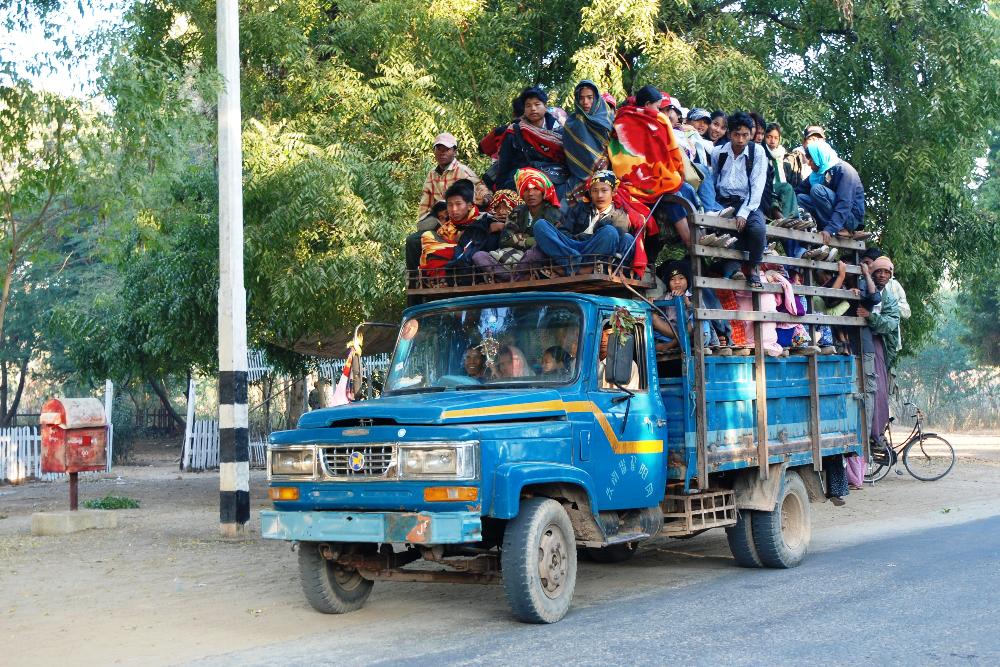
“I travel not to go anywhere, but to go. I travel for travel’s sake. The great affair is to move.” - Robert Louis Stevenson
Travel, by its very definition, is about movement, sometimes over vast distances.
Travellers obviously need to know how to get from A to B and those of you on a shoestring budget will undoubtedly be interested in learning how to do so in an extremely affordable way, by saving as much money as possible on transportation.
After all, transportation is one of the "big three" expenses that travellers have to deal with, the other two being food and accommodation. Get a tight grasp on this subject, and your overall travel expenditure will plummet dramatically.
But deciding on how to travel from one destination to the next can often be anything but straightforward, especially when you're trying to figure out the most cost-effective method.
We live in the modern age, where there are aeroplanes, taxis, buses, minivans, trains, three-wheelers, motorcycles, bicycles, ferries, horse traps, camels and many other means of conveyance to choose between when it's time to move.
The extensive array of transport options we're often faced with as travellers can be confusing, especially when we're trying to minimize costs. Which option or combination of options is the most cost-effective and in which situations?
If you want to spend more money on incredible experiences and less on transportation, this article advances 37 guidelines for minimizing transport costs while travelling.
For the ultra budget travellers we have also outlined several modes of transportation that are completely free and won't cost you a dime.
Stay tuned, because you're about to read the most comprehensive guide to saving money on transportation ever written for travellers.
Let's jump right into it.
General tips for saving money on transportation
#1 - Travel to countries where transportation is cheap
.jpg)
If you want to save money on transportation while travelling, consider what countries you’re actually visiting in the first place.
The cost of travel, whether by taxi, public transport or with your own vehicle can vary hugely from country to country.
Public transportation is generally more expensive in developed countries, where the infrastructure is more developed, the technology is cutting-edge and journey times are significantly shorter (think high-speed trains in Russia, China, Japan, France etc.).
Developing countries on the other hand often have dirt-cheap public transportation systems (and often very poorly maintained road and railway networks to support them).
While travelling around Asia, we observed that public transport was especially cheap in the countries of India, Sri Lanka and Indonesia. In these countries we could often travel 100 km or more on the public buses and trains for $1 or less.
Check out this page also for a comparison of public transport costs between cities around the world.
Gas prices will also influence the costs of public transit in a country but are especially important to consider if you’re going to be touring the country with your own motor vehicle or frequently renting motor vehicles for daily excursions.
In Southeast Asia you’ll find the cheapest gas in Indonesia and Malaysia. Prices for gas are similar in these two countries and very low indeed. During our last trip to Sumatra, Indonesia we were buying a litre of gas for just 6,000 IDR ($0.45) at the filling stations.
Here’s a very useful page that compares gas prices by country.
Venezuela has the cheapest gas in the world by a long shot, followed by Saudi Arabia and then Turkmenistan. In general, the Middle Eastern and Arabic countries have the cheapest gas.
Of course, there’s no sense in visiting a country with cheap transportation if this boon is negated by higher costs in other travel expense categories such as accommodation, groceries, eating out, ATM withdrawal fees, admission fees and so on.
You need to target countries with cheap transportation that are also cheap overall.
Numbeo is one of our favourite resources for finding out the overall cost of living of a country we might be interested in visiting. You can also compare the cost of living between two different countries.
There's more to it than that though. Numbeo is the world’s largest database of user-generated data on cities and countries worldwide, allowing you to determine costs of living, property prices, crime, health care, pollution, traffic, quality of life and travel costs.
You can may also refer to this page on expatistan.com, which assigns a cost of living index to over 300 cities around world. The central reference city they use is Prague, which is assigned a value of 100, and all other price index values are relative to that.
#2 - Set a low spending target for transportation
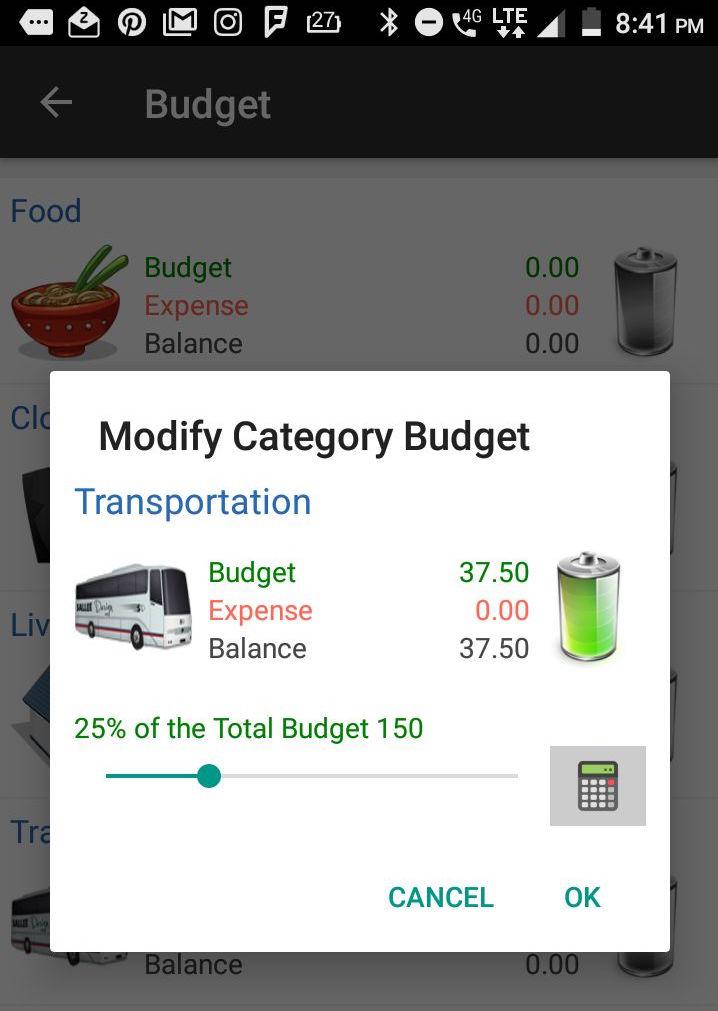
“Shoot for the moon. Even if you miss, you’ll land among the stars.”
Setting some kind of a target means that you naturally strive to reach that target and will be more likely to achieve it.
If you set a really low and challenging weekly or monthly spending target for transport and make yourself accountable to it, you may not necessarily achieve it, but you’ll at least be more likely to.
Our target is usually to spend no more than $1.50 per day on transport when we’re travelling in developing countries in Asia. Setting a challenging target like this will make you more creative and force you to always choose the most economical transport options.
Apps like Trailwallet(iOS only) and AndroMoney (Android only) can help you to monitor your transportation and other travel expenses so that you can make sure you’re on track to meet your weekly or monthly target.
#3 - Travel slow

By travelling slower and less frenetically, you can significantly cut your weekly or monthly transport costs.
The first principle of slow travel is to relocate less frequently.
Every time you relocate, you are liable to incur transport costs, whether you make the move by flying, overlanding or voyaging by boat.
It makes sense then that if you linger on a little longer in places and relocate fewer times within a given time period, your transport costs will be greatly reduced.
Slowing down and taking root in one place for a while can also open up the possibility of purchasing discounted weekly, monthly or seasonal public transport passes (bus/train etc.), which may allow for unlimited use of the service for one week, month or longer.
For example in Bangkok, you can buy 30-day smart passes, commonly known as “rabbit cards” for the BTS skytrain. These long-term use transport passes can work out significantly cheaper than buying tickets with only one day of validity on a daily basis.
Staying longer in places means that you can also take advantage of long-term vehicle rental contracts. It is significantly cheaper to rent a vehicle like a bicycle or motorcycle for a month or more than renting it daily.
Slowing down doesn’t mean seeing or doing less either. The well-known phrase “less is more” is very befitting here, since less time is spent in transit between destinations, which is time that many travellers would consider to be unproductive.
And if you dig a bit deeper, you’ll discover that many destinations are bountiful enough to keep you engaged for weeks, if not months. The most popular sights that tourists hone in on are only the tip of the iceberg.
The third facet of slow travel is literally travelling slower. By taking the slowest option, whether that’s the slow train that stops at all the stations along the way or the slow local bus that keeps constantly pulling over to pick up passengers, you will usually save money by choosing the slowest option in getting from A to B.
#4 - Pack light (hand luggage only)
Packing light can help to reduce your transportation costs in a multitude of different ways.
One obvious way a light load can help is by enabling you to walk in many situations where walking would have previously seemed impossible or too onerous to be worth considering.
For example, if you arrive at a bus or train station weighed down with heavy baggage, you will probably not be capable of walking to your hotel, even if it’s within walking distance of the station.
Or if your hotel is reachable by taking a local bus from near the station, you might be too overburdened with luggage to even walk to the bus stop.
Because of your inability to walk, you end up being forced to hail a taxi or a three-wheeler, which costs you money you could have saved by having the use of your legs.
Travelling light can also save you money on transport by helping you to avoid paying a double or even a triple fare.
What we mean is that sometimes travellers with enormous backpacks will be asked to pay for not one but two seats in minivans or on certain local buses where luggage holds are non-existent and space inside the vehicle is at a premium.
Travellers in these situations are thus forced to stow their backpacks on one of the vehicle’s free seats, thus incurring a penalty from the vehicle owner for the opportunity cost.
Luckily you won’t face this kind of issue when carrying just a small daypack, as you’ll normally be able to shove it under a seat, keep it between your legs or rest it on your lap. Daypacks aren’t as hungry for space as those enormous hiking backpacks and won’t consume a whole seat.
Another transport cost that gets eliminated when you travel light is the extra add-on charge for checked baggage that is the scourge of many budget airlines such as Ryanair and Air Asia.
When you start factoring in the extra costs associated with stowing checked baggage, these airlines suddenly start not to seem so “budget” after all. Travel with hand luggage only and you avoid these extra charges.
If you’re unsure about how to pack lightly and efficiently so as to travel with just a daypack, you might want to check out our article on the 6 golden principles for ultralight travel.
If you’re looking for recommendations on a great daypack, you can also read our article on the 5 best carry-on backpacks for minimalist travellers.
Another type of traveller that can benefit from packing light is the hitchhiker and we all know that hitchhiking is one of the most effective ways to save money on transport when travelling.
As a hitchhiker, you’ll be more likely to bag a ride if you’re travelling light, especially in the instance of a passing vehicle where passenger space is limited.
Considering that a huge backpack almost occupies the same amount of space as an extra person, if there’s only one vacant seat left in the approaching vehicle and the trunk is already full to the brim, you can probably forget about the driver pulling over.
#5 - Haggle for a lower fare (when appropriate)

When it comes to transport costs, especially in the developing countries where prices are more flexible, your ability and willingness to haggle can make a huge difference to the amount of money you save.
Haggling is especially appropriate, effective, even essential, when it comes to using local transport and hiring car taxis, motorcycle taxis, auto-rickshaws, cycle-rickshaws, tuk-tuks, minivans, sawngthaews, horse-drawn carts and so on.
It’s also sometimes possible to negotiate a reduced fare on long-distance or inter-city bus journeys. We talk more about how we do that a bit later in the article.
It’s especially important to haggle when you think that you’re being overcharged, which happens to foreigners far too often in our experience.
If your haggling skills aren't quite up to par, our article on how to become a pro haggler might interest you.
#6 - Take into account your travel configuration
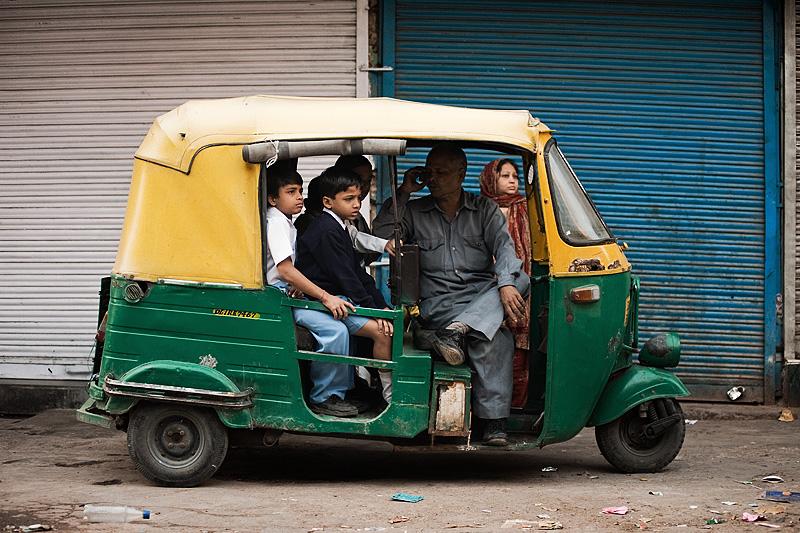
When you’re travelling solo, the most economical mode of transport for getting from A to B can often be different to that when you’re travelling with a partner or as part of a group.
This is an especially important consideration when some of the available modes of transport charge on a “per vehicle” as opposed to a “per passenger” basis.
It’s important to take into account your travel configuration when deciding on the mode of the transport that you’re going to take.
For example, a solo traveller’s most economical option for a day of sightseeing might be to rent a pedal bicycle, since that’s a lot less costly for him than renting a motorcycle or a three-wheeler.
But a group of three travellers might be better off renting and sharing the motorcycle, splitting the costs for rental and fuel among themselves and possibly paying even less per head than what they’d pay to each rent a bicycle.
A solo traveller would not get great value for money by chartering a three-wheeler taxi on his own, but it might make sense for a group of three or four travellers to do so, since the fare for the journey would be split between everybody.
When it comes to chartering vehicles and you’re travelling just as a pair or even as a trio, motorcycle taxis or motos are often the most economical option, because they normally charge a lower fare than the three-wheelers for a given distance.
Unfortunately, in some instances the motorcycle taxi drivers will be reluctant to allow more than one passenger on the back of the bike and hence will often fetch two motorcycle taxis (if you’re travelling as a duo). By riding on two separate motorcycles instead of sharing one, you would be charged double.
Whether this is done to make extra money or due to fears of being reprimanded by traffic police for exceeding the legal number of extra passengers, we’re not entirely sure (probably a combination of both).
The good news is that on most occasions we have been able to find a moto driver willing to take the two of us together on the one bike.
#7 - Avoid rip-offs and transportation scams
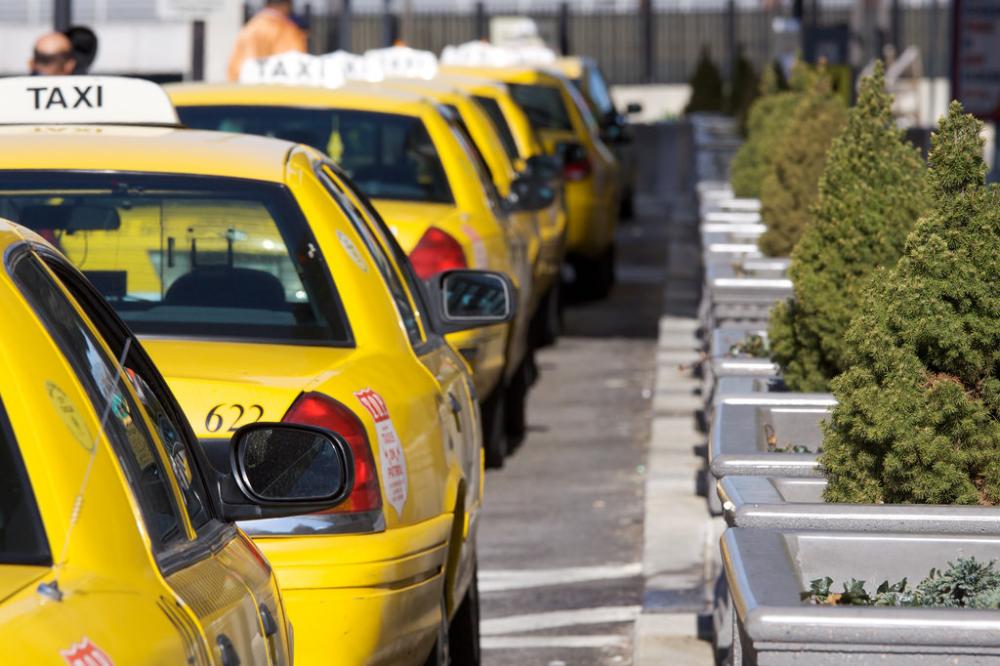
Even if you make all the right choices and choose the most economical modes of transport, you can still fail to save money if you get overcharged or fall prey to costly scams.
Transport scams tend to be less common in developed countries but if you’re travelling in developing or third-world countries, scams usually exist for virtually every mode of transport, especially for tourists.
We do have to admit that trains seem to be less prone to organized scams than many other forms of transport, although you still do get the odd fake ticket checker (fining ticketless commuters) looking to relieve you of your hard-earned cash. These kinds of scams areespecially common in India.
Trains also have the ticket machine scam, the luggage porter scam, the “overbooked” or “cancelled” train scam and a few types of cleverly orchestrated pickpocketing scams, such as the blocked doorways scam.
For more about train scams and how to avoid them, check out this article.
Taxi scams are legion and that is one reason we almost never ride in taxis.
The meters can be rigged to run faster, drivers can deliberately take circuitous routes to rack up the fare, drive off with your luggage still in the trunk after you step out, or pretend they have no change in a bid to make you pay extra.
Bus scams can be quite common in some countries too. There’s the bait-and-switch scam (VIP bus substituted with regular bus after payment has been made), the valuables theft scam and the border bus scam, among others.
Blatant overcharging of foreigners is very common on local buses in many countries and the local passengers often turn a blind eye to it as well. One fare collector might be completely honest with you while the next might try to milk you for all your worth.
Of the countries we’ve visited, we have experienced overcharging on local buses to a high degree in Indonesia, but it truly can happen almost anywhere. All you need is one unscrupulous fare collector.
The best way to protect against overcharging on local buses is to travel with a local friend or partner who can look out for you and buy tickets on your behalf, although that’s obviously not always possible.
If you’re alone and suspicious of the quoted fare, you can try to ask other local passengers what the correct fare should be, though they may be complicit in the scam too.
There is also huge potential for getting scammed when taking three wheeler rides with tuk-tuks, auto-rickshaws and the like in countries like Thailand, India, Laos and Cambodia. Common scams include the discounted or free ride scam and the “hotel closed” scam.
There are also scams that potentially await you when you try to rent jet skis, motorcycles, cars and other vehicles. Many of these involve an accomplice of the rental company deliberately damaging the vehicle, you getting blamed for it and you then having to pay exorbitantly for the repairs.
Beware of gas station scams too, where the attendant fails to reset the meter to zero and you end up getting less petrol than what you paid for.
We’ve gone into more detail about some of these transportation scams, as well as giving tips on how to dodge them in our article on 22 common travel scams and how to avoid them.
#8 - Use the sharing economy
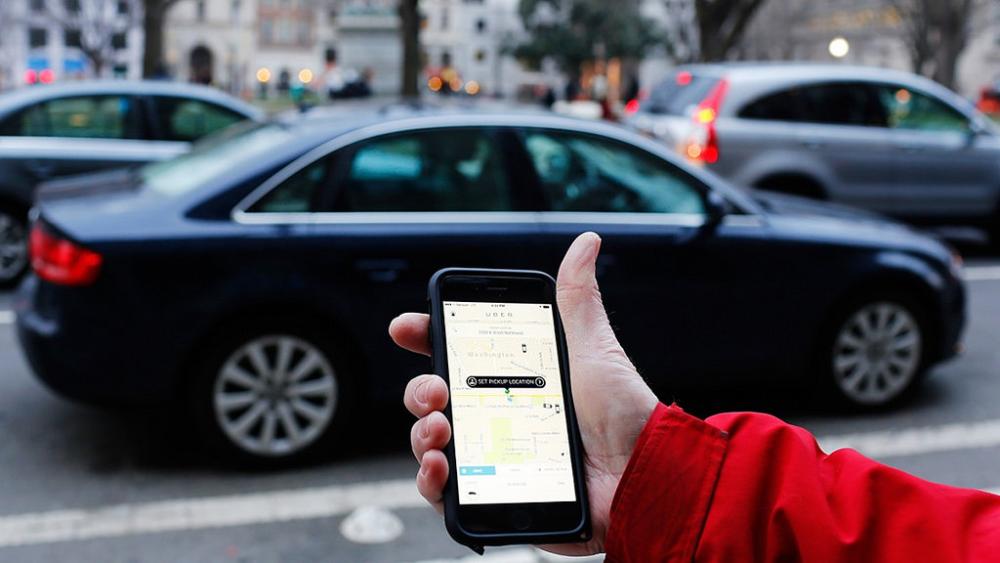
As a traveller, you now have access to a number of ride sharing and carpooling services, which are usually cheaper, faster and possibly safer than conventional taxis.
These services are quite versatile and can be used not only for local, intra-city transport, but also for long-distance or inter-city transportation.
The way ridesharing services work is simple in theory; partner drivers register their vehicles as taxis with a ride-sharing company and anyone with a smartphone can then use a mobile app created by the company to access this pool of drivers and request a ride from one of them.
It’s technically not ride "sharing”, as drivers are profiting off riders and driving them to places they aren’t already going to themselves. It can perhaps be better described as an example of the peer-to-peer business model, which is facilitated by ridesharing companies.
The function of the companies is to act as middlemen, hiring and vetting drivers, ensuring vehicles meet certain standards, creating, maintaining and updating the apps that connect drivers with riders, handling payments, disputes and so on.
Riders generally pay the driver directly in cash or have payments deducted from a registered card, which the company takes a small share of and then pays the rest back to the driver.
Uber is the biggest and most well known of these ride-sharing companies, with coverage all over the globe. Grab is Uber’s biggest rival in Southeast Asia. Lyft is popular in the US, but for the moment is restricted to there only.
If you’re using Uber, the best ride option for saving money is UberPool, which allows you to share an Uber taxi with other people who are going in the same direction as you.
With UberPool, the driver will pick up additional passengers along the way and drop everybody off individually. You generally pay less than a standard Uber X fare while using UberPool.
In addition to ridesharing, you have carpooling.
A carpooling platform worth knowing about is Paris-based Blablacar, said to be the “Airbnb of transportation”, which is currently available in Mexico, Russia and all over Europe, but not in the US.
Blablacar is fundamentally a bit different to Uber and similar ride-sharing companies, which facilitate a peer-to-peer taxi service for intra-city transportation.
The company's main aim is to help both drivers and travellers find carpooling opportunities for longer, inter-city journeys, in order to reduce costs. It connects drivers travelling from one city to another with travellers going the same way. The average Blablacar ride is about 213 miles.
Carpooling benefits the driver by saving him money on gas, tolls, parking and vehicle upkeep by sharing the cost among all the riders and it’s a lot cheaper for co-travellers than some alternative modes of transport, such as taxis.
Blablacar sets a price ceiling to ensure that drivers do not profit from their riders and drivers do not offer rides unless they are going somewhere anyway, so it is a real example of ride “sharing”, unlike what is seen with companies like Uber.
Payments are made in cash to the driver, in the car and normally at the journey’s outset. The company makes its money from co-travellers by charging a service fee (inclusive of VAT) for the online booking of the seat. No money is taken from the driver.
As a traveller, ridesharing and carpooling apps and search engines could benefit you both as a rider and as a driver, if you're touring a country with your own vehicle.
For peer-to-peer bicycle rentals, a good company to know about is Spinlister. This is a service that could come in handy whenever you can't find any local bicycle rental shops at your destination.
For peer-to-peer car rentals, there's Turo. It isn't really any cheaper than normal rentals, but you do get a greater selection of cars to choose from.
Free ways to travel
In this section of the article we're going to take a look at a few methods of travel that are completely free, at least in the sense that your wallet won't be any lighter after using them.
Some of the methods we've looked at are perfectly safe and legitimate, while others carry a high degree of risk, may get you into trouble with the law and should only be used in financial emergencies.
#9 - Try hitchhiking
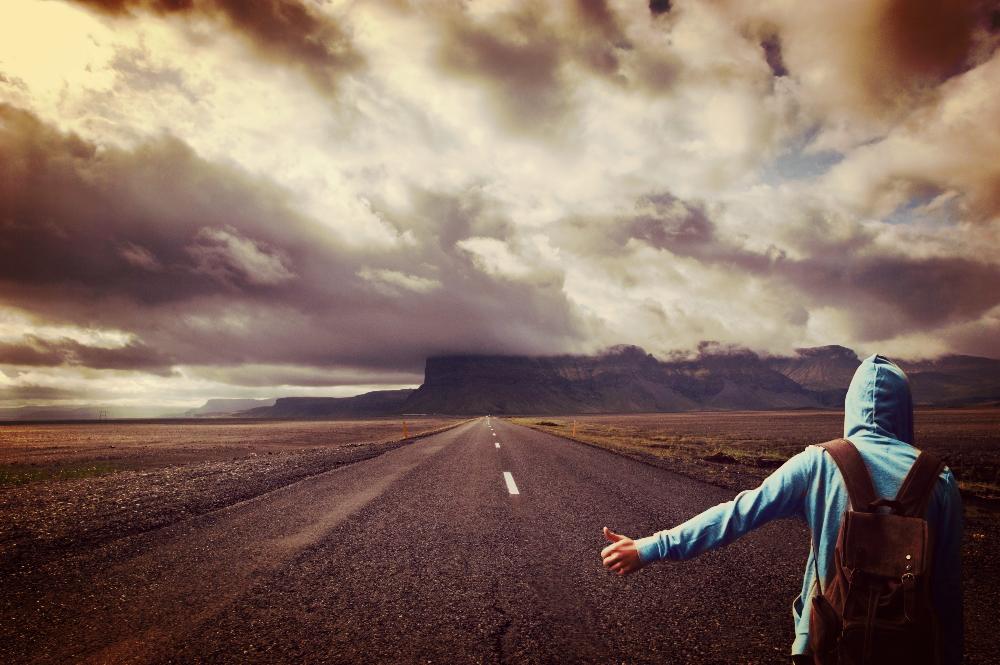
Hitchhiking, as a means of getting from A to B, has existed for as long as the wheel. Originally it was synonymous with hiking; you started walking and would opportunistically try to flag down any motor vehicles that came along.
As a completely free way of getting around (in most cases), hitchhiking is obviously one of the most effective ways to dramatically cut transport costs when you’re on the road.
You’ll normally have the most success hitching rides from road vehicles such as cars, motorcycles, jeeps, vans, trucks and lorries.
Single male drivers are perhaps the most likely to stop, but we have also been picked up by lone females, families, a pair of women, a pair of men and a few other combinations.
In addition to catching a ride from a road vehicle, it's also occasionally possible to hitch a ride with a boat or even a private light aircraft. Here’s a useful article on Hitchwiki about how to hitchhike a boat.
We hitchhike all the time, especially for local short hops in more remote or rural locations when there is no public transit or facilities where we can rent bicycles or a motorcycle.
In these circumstances, we’ll often hitchhike back and forth between our accommodation and the various local sights and attractions that we want to visit.
But hitchhiking is definitely not reserved just for local short hops.
When it’s time to relocate to a new faraway destination, you might also consider hitchhiking the entire journey, especially if getting there is pretty straightforward via one continuous highway or main road.
One time while hitchhiking in Ireland, we got picked up alongside a busy motorway by a friendly family that just so happened to be going all the way to our final destination, over 200 km away. It was a real stroke of luck because we had been waiting there for no more than 5 minutes before the car pulled over.
True, hitchhiking longer distances (i.e. hundreds of kilometres) between two destinations can be intimidating for the uninitiated. It requires a lot of patience at times and the ability to deal with multiple rejections. Loneliness is a very real possibility if you're hitchhiking as a solo traveller.
On the other hand, hitchhiking can be very rewarding, by granting you the opportunity to meet and converse with so many different strangers from diverse walks of life.
Hitchhiking will also cut your transport costs dramatically and, if the driver decides to host you, your food and lodging costs too. It's not uncommon to be invited back for a meal or to stay for the night if you’re friendly and sociable.
In some developing countries the concept of hitchhiking is alien to many of the locals and they won’t understand why a presumably rich foreigner who can afford to fly to their country can’t afford to use the same local public transit services that they have no problem affording.
Sometimes there simply is no other way to get somewhere except by hitchhiking and the locals take advantage of their monopoly position by asking you to pay your way.
Whatever the underlying reason, locals in developing countries will sometimes expect you to split gas costs or pay them some money for a ride.
To avoid any misunderstandings or disputes at the end of the journey, make sure to be very clear at the beginning that you have no money and are only looking for a free ride. Knowing a few key words of the local language also helps tremendously to get the message across.
We have done a few longer hitchhiking trips ourselves, including ones in the USA and a very memorable hitchhiking journey of the Ring of Kerry in the west of Ireland. These are among the most memorable trips of our lives.
A great resource with information and tips on hitchhiking specific countries is Hitchwiki.org. This is an essential website to visit if you’re planning a hitchhiking trip.
If you want to learn some practical tips for hitchhiking, we’ve also written an entire article on how to become a pro hitchhiker in no time. Hitchhiking is not quite as simple as just standing beside any old road and sticking out your thumb.
#10 - Become a stowaway
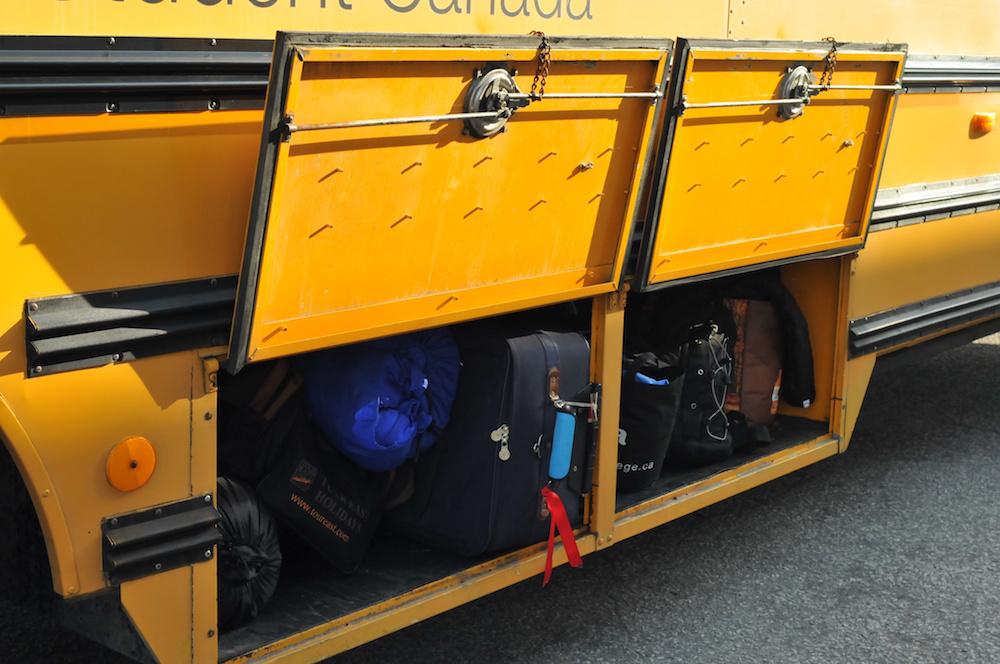
The act of stowing away is often associated with foreign immigrants trying to enter a country illegally, but it is also a method of travel used by those who are too poor to afford it or who simply don’t want to pay the fare.
An altogether separate affair to hitchhiking, stowing away involves secretly hiding inside a bus, passenger train, freight train, cargo ship, oil tanker, cargo truck, ferry, airplane or other vehicle to evade security checks, fare collectors or ticket inspectors.
So obviously while hitchhiking is a consensual agreement between two parties, stowing away is not.
Many stowaways have attempted to hide inside the luggage compartments or toilets of buses, includingthis case of a man who was hiding in the luggage hold of a Greyhound bus and managed to set the bus on fire, injuring himself critically as a result.
In Russia, some passenger trains provide a special freight flatcar for stowaways, where they are allowed to ride for free, although this probably can’t really be considered “stowing away”.
Travellers have also tried to hide inside the toilets of passenger trains or behind suitcases in the overhead luggage rack.
On big ships there are obviously a huge number of potential hiding places, including storage rooms, crane cabins, chain lockers, mast houses, rudder shaft spaces, freight containers and many more locations.
To get on board in the first place without permission, stowaways will usually have to either bribe security staff or sneak on board. Another technique is to dress up as a crew member and wear a fake I.D badge to gain access to the vessel.
Stowaways may also gain access to empty shipping containers prior to loading. They’ll erect a panel or fake wall resembling the real back wall near the rear of the container and hide themselves in the space behind it.
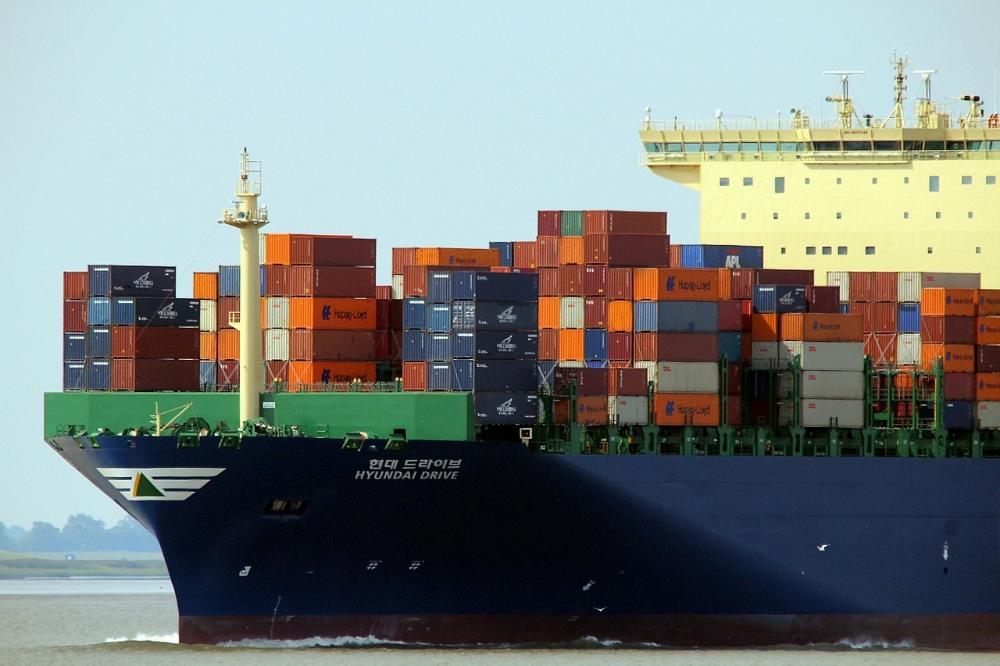
In Europe, stowaways often get onto roll-on, roll-off car ferries by breaking into holiday camper vans or towed caravan trailers and hiding themselves inside without the owner ever realizing. Some vehicle owners however are complicit in these ploys, such as in this case back in 2013.
The history of stowaways is rather fascinating. During economic recessions, emigrants seeking work and travellers in search of adventure would stow away in ships and trains so as to be transported to new lands where new opportunities would await.
It was a lot easier to be a stowaway in the past when security measures at docks and rail yards were more lax. Nowadays with much tighter security in many countries, it’s more difficult to succeed, although still possible in many cases.
The methods of detecting stowaways today are quite sophisticated involving carbon dioxide detectors, sniffer dogs, infrared cameras, alarm systems, CCTV cameras, stethoscopic microphones (heartbeat detectors) and X-rays, though stowaways are just as adept at outfoxing them.
According to Wikipedia however, many immigrants still travel around Europe by stowing away in cargo trucks and trains, in an attempt to reach countries like France and Great Britain.
In practice, stowing away on ships, trucks, buses and trains can be very risky and could easily end in serious injury or death if you’re poorly prepared.
You have to ensure that you have sufficient food and water supplies to last you the journey (which could take weeks on cargo ships) and adequate clothing to prevent hypothermia.
In 2014, 35 stowaways were found “screaming and banging” inside a shipping container in Tilbury Docks, Essex, having travelled all the way from Belgium. One man died, while most of the others were starving, dehydrated, hypothermic and had to be rushed to hospital. You can read the story here.
The penalty for being caught stowing away can vary hugely from country to country and depending on the mode of transport in question.
On tightly secured cargo ships, aircraft and trains, the punishment would likely be quite severe, possibly entailing fines or imprisonment. As a foreigner or tourist you might be given more leeway than nationals.
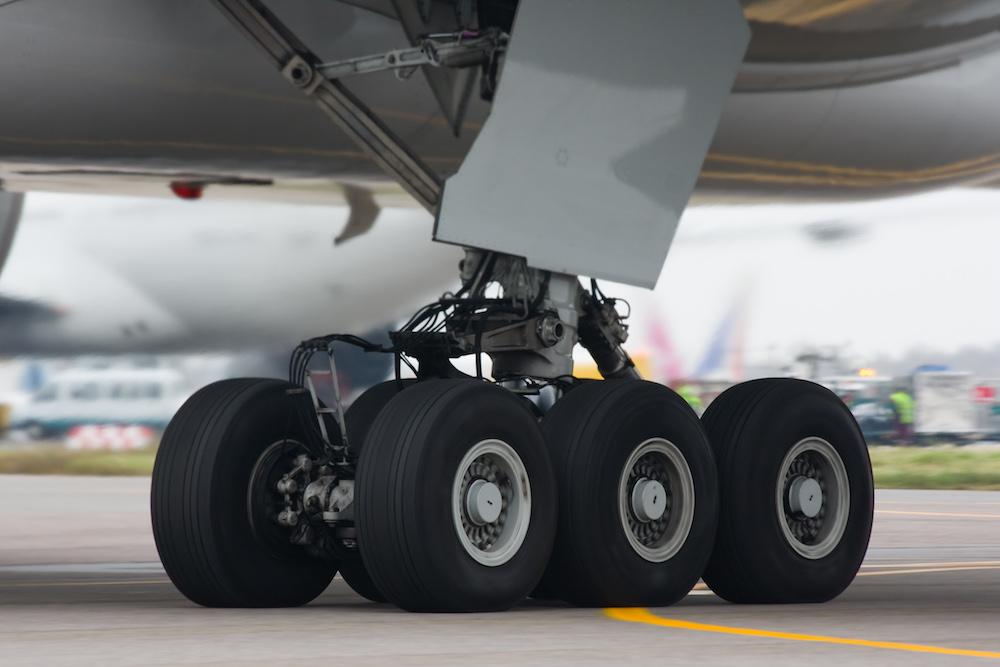
Stowing away on aircrafts is very rare due to the high risk of death and tight security at airports, but cases are still reported from time to time.
Of the 96 known aircraft stowaway attempts occurring between 1947 and 2012, there were 73 deaths and 23 survivors, putting the survival rate at about 24%, almost a 1 in 4 chance of success.
To stow away on an aircraft you’ll normally have to first sneak into the airport apron (the area where the plane is stationed) and then climb up the landing gear into the wheel well of the plane. This is likely only going to be achievable in airports with poor perimeter security.
If you manage to avoid getting crushed by the retracting undercarriage after take-off, you’ll then have to survive the extreme environment inside the wheel well as the plane ascends to altitudes of 39,000 feet or more.
You’ll most likely become unconscious due to the low oxygen levels, sub-zero temperatures and extremely low air pressure inside the compartment.
When the landing gear is deployed before landing, you may then roll out of the airplane and fall to your death.
There’s also a high risk of going deaf or developing tinnitus from the extremely loud 140 dB roar generated by the aircraft’s jet engines.
The risks here are obviously massive and we wouldn’t even consider stowing away on an aircraft in this manner unless it was a matter of life or death.
A possibly safer way to stow on an aircraft is to seal yourself inside a large box and have the box mailed to a destination using a courier service like UPS. These boxes will often be stored in a pressurized part of the aircraft, reducing many of the health risks.
There was one reported case in 2003 where a man called Charles Mc Kinley mailed himself from New York to Dallas, Texas simply to save money!
For more reading on this topic, Wikipedia also has an article about it.
#11 - Try train hopping
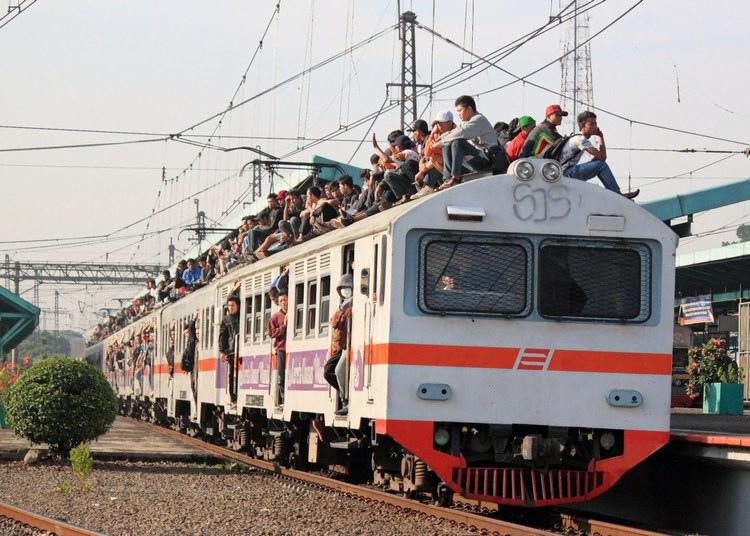
Train hopping, also known as train surfing or train hitching, involves travelling on the outside of trains in order to avoid paying the fare.
Trains are often boarded while stationary at stations or at common stopping points along the track such as “side-outs” (areas with two parallel tracks where trains stop to allow other trains to pass).
To avoid security personnel at train stations, trainhoppers will often jump onto trains while they’re moving too, even dropping down onto the roofs of trains from overhead bridges and overpasses.
In the early 1900s during the great depression in the US, train hoppers would travel on freight trains using a technique known as “riding the rods”.
Back in those days, wood frame cars were used to transport freight and they had to be reinforced underneath with a number of steel trusses running lengthwise.
Train hoppers would lie across these “rods” just inches above the rails, often placing a wooden board across for extra comfort. Nowadays train hoppers usually ride at the rear or on the roofs of trains.
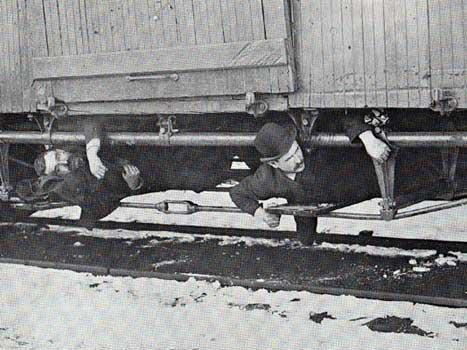
At the rear of many trains there are often many appendages, handles and footholds that can allow fifteen people or more to cling on at the same time.
However, there is the very real risk of falling off the train when doing this. Some train hoppers mitigate the risk by wearing safety belts and fastening themselves to the train with vacuum suction cups and rock climbing equipment.
Hanging off the side of a train is very dangerous for obvious reasons with the very real risk of colliding with signposts, traffic lights and other infrastructure alongside the tracks. Tight tunnels and narrow passes are also a major hazard when doing this.
Train hoppers also frequently ride on the roofs of trains, often positioning themselves in the slightly recessed space between the carriages, atop the accordion-like connectors.
This is also very risky for several reasons, not least of which is the risk of falling off if the train were to suddenly brake when making an emergency stop. There is also the risk of collision with bridges and tunnels that don’t provide enough clearance to allow a person to pass underneath.
The recessed space between the carriages on many trains can help solve this problem but research of the specific route you’re travelling and vigilance at all times during the journey are still obviously vital to avoid catastrophes.
Riding through tunnels on diesel trains can also cause asphyxiation due to the fumes, though some train hoppers combat this by putting a damp cloth called a “skank” over the mouth and nose before entering a tunnel.

It’s especially dangerous to ride on the roofs of electric trains with overhead AC cables (DC power lines are much safer). These are high-voltage power lines (often 25,000 volts) and the current flowing through the cables can arc through the air and electrocute you if you get within a distance of 10-45 cm.
The minimum distance for safety depends on the weather conditions, with thunderstorms being the most dangerous times due to a high level of ionization in the air.
It’s generally recommended to keep at least one metre away from the overhead power lines at all times and not to ride the roofs of trains at all during bad weather.
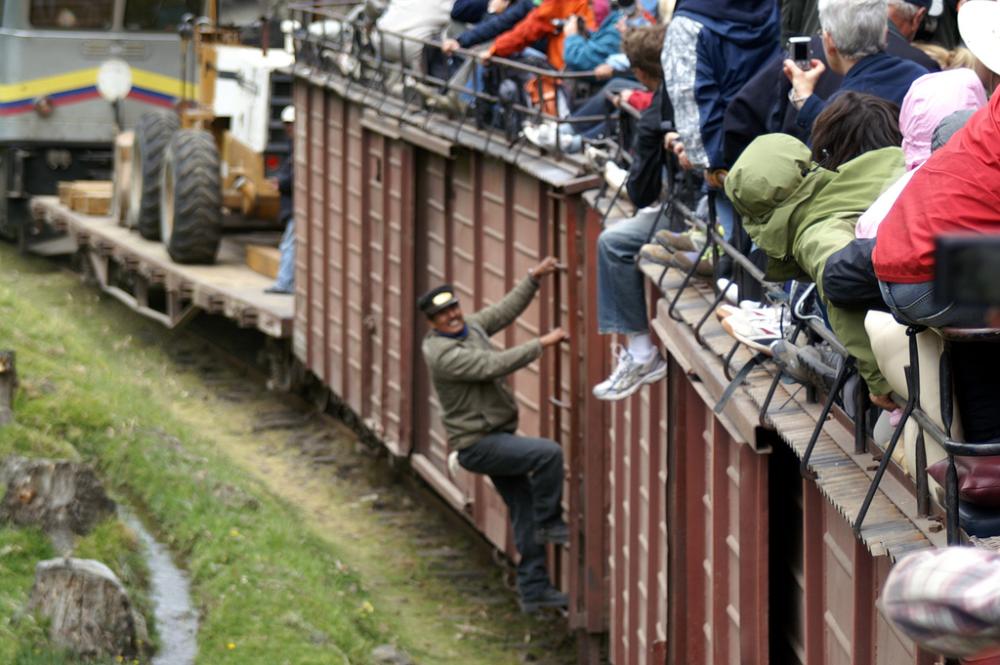
Train hopping on the outsides of passenger trains is a very popular pastime in Russia among idle thrill-seeking teens that have nothing else to do and nobody to take responsibility for them.
An additional reason for its popularity in Russia is the extremely low fine of 100 Russian Roubles ($1.74) if one is caught. The low fine also means that police have little incentive to report train hoppers to the next station.
There’s also a train hopping craze in Australia and South Africa. Here’s an interesting post about one person’s train hopping experience in Australia.
In Australia the security is generally quite lax and there are no railway police. The catch is that you may be fined up to $300 if caught train hopping there.
In Asia, train hopping is often witnessed in the most overpopulated countries of India, Nepal, Bangladesh and Indonesia, where trains are frequently overcrowded and the outside of the train is the more comfortable and sometimes the only available option for riders.
It’s not uncommon to see more than a hundred people hanging off the rear and packed onto the roofs of trains in the most crowded cities in these countries.
Fortunately for train hoppers in this part of the world, authorities often turn a blind eye to it, although there are occasional raids by police and railway guards, according to Hitchwiki.
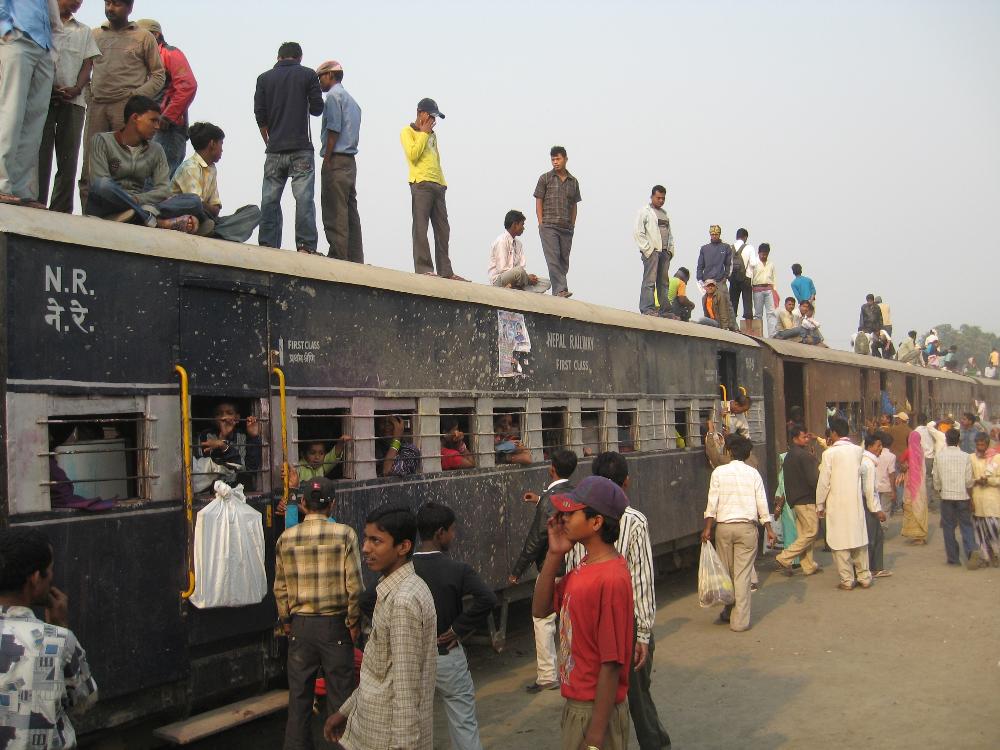
In Europe there are plenty of freight trains and rideable cars. Most of the passenger trains are electric, which is a good thing considering there are so many long tunnels in Europe, (we previously mentioned how Diesel train fumes can cause asphyxiation inside tunnels) although surfing these electric trains obviously comes with other hazards.
However, in most parts of Europe train hopping is uncommon, possibly due to the relatively harsh fines levied for the offence in many countries. For example in the UK, the fine for train hopping is in the region of £1,000. On the brighter side, there are no railroad police in some European countries, as there are in the U.S.
When compared to stowing away on board a vehicle, train hopping is usually a much more dangerous and more punishable pursuit so it’s important to avoid getting caught.
You may be obliged to jump off trains while they’re still in motion to avoid run-ins with security guards or railway police at the stations.
You should always keep a low profile and wear dull clothing with muted colours to try to blend in with the train or possibly try to disguise yourself as a railway worker or engineer by wearing a high-vis vest or jacket.
If travelling on the roof of the train you can try to lay low in the gaps between the train carriages to avoid being seen. Travelling at night obviously makes you much less visible too, but try to avoid staying out in the open on full moon nights.
One country where you can probably relax a bit more is Mexico. According to Dusty Blackthorn, an experienced trainhopper, you can roof ride through towns in Mexico without the police even batting an eyelid. You can read an interview with him here.
Train hopping, where it occurs, is usually only practiced on certain routes where conditions are favourable and the risks of injury or facing sanctions are low.
The information on these train hopping routes is only available from certain sources and is usually only passed on by word of mouth, as publicizing it would very likely lead to a crackdown with tighter security and more severe penalties.
If you’re planning to try freight train hopping in the U.S.A , there is the Crew Change Guide, which gives detailed information on train yards, bulls (police), maps, timetables, train routes etc.
While the document is supposed to only be distributed from hobo-to-hobo, some people do upload copies to the web against the wishes of the community. We were able to download a free PDF copy of the 2015 guide by doing a quick Google search.
If train hopping in Russia, the biggest community of Russian train hoppers can be found on the social networking sitevk.com, where you can find tons of detailed information and advice on specific railway lines.
There’s also a subreddit community r/vagabond with some useful posts on train hopping such as this one.
Hitchwiki also has a really comprehensive and detailed guide to train hopping You should definitely have a read of that if you wish to learn more.
Also see Wikipedia’s article on freighthopping, which is geared specifically towards hitching rides on freight cars.
#12 - Dodge public transit fares
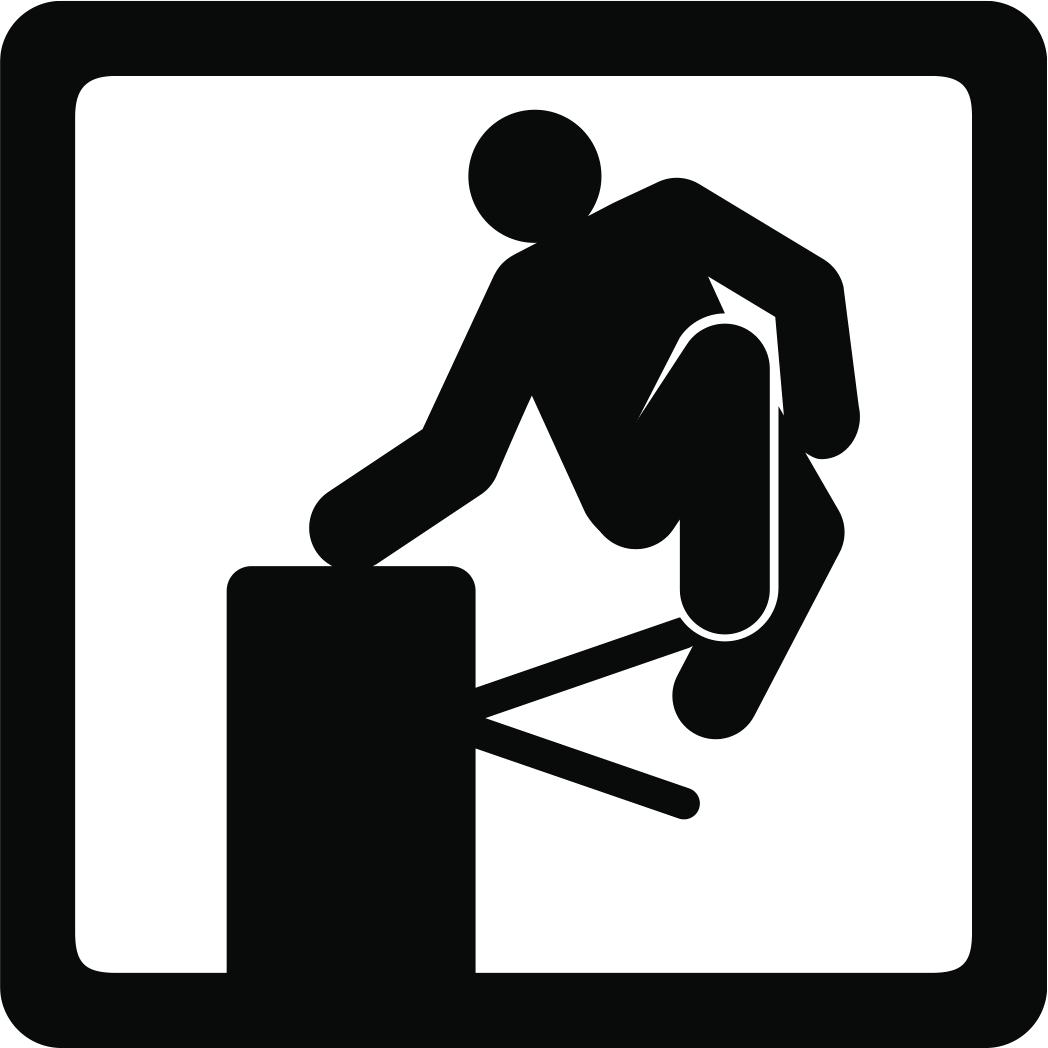
When using public transit to get around towns and cities, some cash-strapped travellers will dodge the fares by playing a constant game of cat and mouse with the ticket inspectors, bus conductors and fare collectors.
It’s also sometimes possible to evade fares in this way on much longer journeys, especially when riding trains.
While this type of activity definitely comes with its risks, revenue protection officers and ticket inspectors in many countries can often be more lenient towards foreigners who they catch riding without a valid ticket, as they just presume that the foreigner isn’t familiar with the rules due to knowing a different system in his own home country.
Fare dodging on trains
Fare dodging can be very effective on trains for two main reasons:
- It’s often easy to board trains without having already purchased a valid ticket.
- It’s often possible to travel great distances on trains before any ticket inspector ever shows up to validate passenger’s tickets
Sometimes however, without having purchased a valid ticket or token, you may have trouble getting past the turnstiles or ticket barriers at the entrances to some train platforms.
In the past subway fare evaders in New York City would get through the turnstiles by purchasing cheap “slugs” – fake subway tokens that fool the turnstiles due to being virtually identical to the real tokens in shape, size, weight and metal type. They don’t use tokens in the New York subway system anymore though.
If you have to overcome a set of standard turnstiles, one solution is to simply frog hop over them or duck under them, provided you can do it without getting caught or reported.
Another solution is to shunt up closely against another person from behind and pass through the barrier/turnstile on their ticket or token. This might be your best option if you’re dealing with ticket barriers that you can’t easily leap over or if there’s somebody keeping watch.
There will also usually be a gate beside the turnstiles for disabled persons, which also serves as a backup entrance or exit when the machines malfunction.
In many instances there will be an employee guarding or watching this gate. If you’re carrying a large backpack you may be able to point to that as an excuse for why you’re not able to get through the turnstiles or ticket barriers.
You won’t always be asked to show your ticket as you pass through the gate but if you are, you can try diverting the employee’s thoughts with questions about what platform you catch your train from. That might cause him to forget about asking you again.
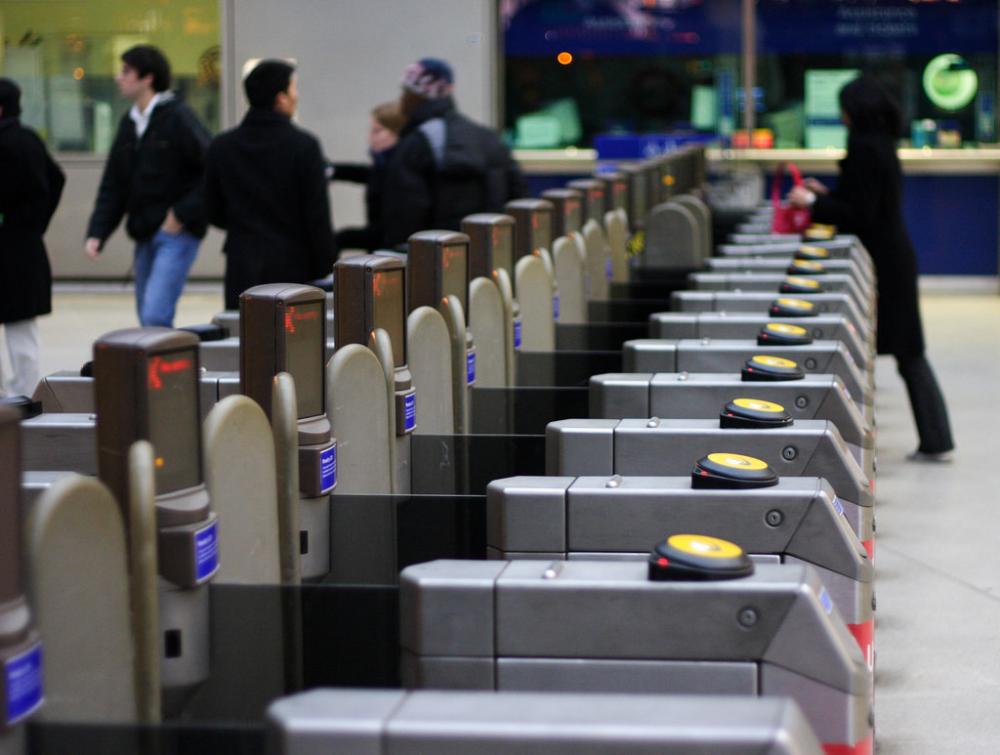
Once you’re on board the train, it’s normally just a matter of staying vigilant for ticket inspectors at all times.
Inspectors will normally board the train when it stops at one of the stations. When this happens, you can simultaneously disembark at the same station and then wait on the platform for the next train to avoid getting caught and having to pay a penalty fare.
If you get caught off-guard and don’t have a chance to escape the train before the ticket inspector gets to you (they often seem to make their rounds on the longest stretch of the entire route between stops), you should at least have a very good excuse prepared to help reduce the chances of getting fined.
“Oh I thought I was supposed to buy the ticket on board the train. That’s how it works in my country.”
“The ticket counter in the station I boarded at was closed and a member of staff told me to buy a ticket on the train from the inspector instead.”
It’s best if you take a proactive approach and tell the inspector that you need to buy a ticket before he even gets the chance to ask you to present one.
That way it doesn’t look like you were trying to dodge the fare, as might be suspected if you were to shrink away quietly into a corner while praying that the inspector overlooks you.
In fact, in many countries, it is not an offense to not be in possession of a valid ticket. The offense is to intentionally be travelling without a valid ticket.
In some countries, such as India, you won’t have to worry about fines or penalty fares too much if you’re caught riding the train without a valid ticket, especially as a foreigner. You will likely just be asked to pay the fare on the spot or be asked to step off the train if you can’t pay it.
Attitudes towards ticketless passengers generally tend to be more relaxed on routes where there are long queues at railway stations and buying a ticket from the counter while in a rush to catch your train is impossible.
If you do manage to successfully dodge a train fare and reach your intended railway station, your problems may not be completely over.
Many train stations also require you to insert your ticket or token in order to exit the station. The techniques we already mentioned for surpassing the ticket barriers can again be used here. It’s also possible to find alternative exits from many train stations if you simply look around.
If you get caught at this final hurdle, you may have to pay a penalty fare, but if you are only asked to pay the ordinary fare, you can try claiming that you came from a station only one or two stops away, so as to be charged significantly less.
Fare dodging on buses
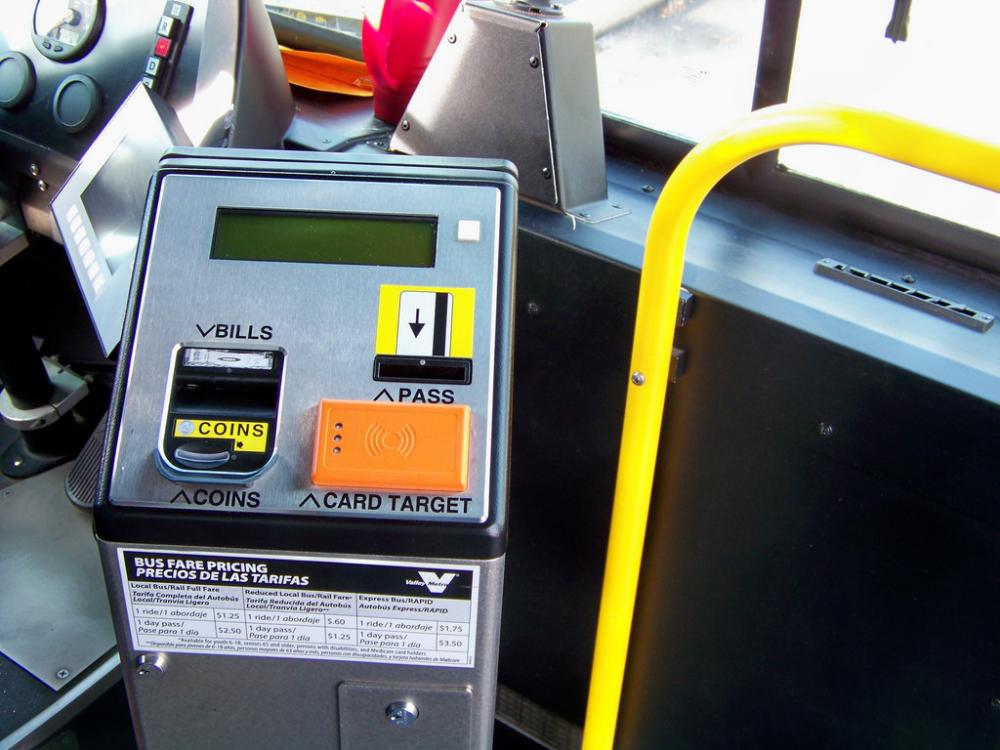
Fare dodging can also be effective on short-hop local bus journeys, especially when the fare is collected some time after boarding the bus.
It can be very easy to dodge the fares on the local buses in Bangkok for example, where you might sometimes be able to ride for twenty minutes or more before the fare collector lady even boards, if she boards at all.
If the fare collector is already on a bus when you board, it’s more difficult to dodge the fare, unless the bus is already very crowded, as it’s then more difficult for the fare collector to keep track of who has and hasn’t already paid.
On crowded buses you will occasionally be mistaken for one of the passengers that has already paid the fare and will be less likely to receive a tap on the shoulder at the last moment when disembarking.
It can also be difficult to dodge fares on buses where the fare is to be paid at the front of the bus, by dropping it into the farebox next to the driver.
Even with these buses however, it will sometimes be possible to enter through the back or side door of the vehicle without the driver noticing.
This will only usually work when you’re one of several people boarding the bus at the same time. The driver will be distracted with the other people boarding at the front while you enter through the side or back door.
On some buses the driver might only open the back or side doors to let people off when the gangway is heavily congested with standing passengers. You can try boarding via the side or back door while other passengers are getting off.
Another technique that can work well is to pretend to belong to a large group that is boarding the bus, by hanging close by.
In this type of situation, one member of the group will often hang back to pay for everybody else and the driver will allow the other group members to go on ahead and take their seats on the bus. You can board with the other group members.
Some buses in developed countries are now using contactless card payment systems and the driver has little involvement with ensuring the passengers have paid the fare.
Inspectors will occasionally board these buses and perform checks to make up for the lack of fare enforcement. Always be prepared to get off any bus immediately if an inspector boards and hope that he doesn’t ask to see your ticket on the way out.
Fare dodging on trams
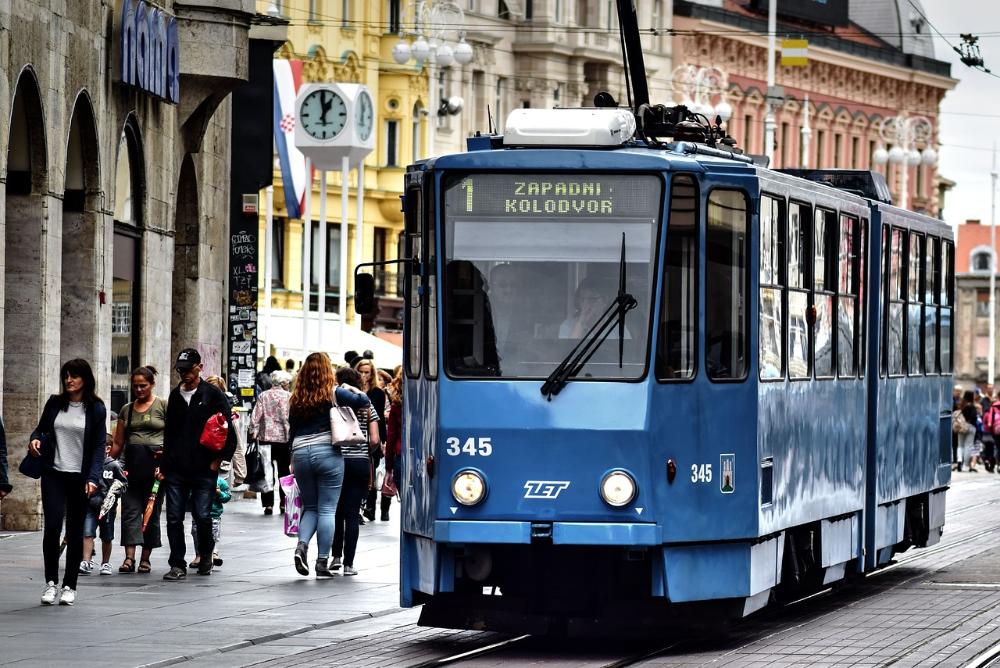
Many budget travellers and cash-strapped students get around cities for free by dodging the fares for trams or light rail transit systems.
Often ticket inspectors can be very rare on trams, which makes tram fares less risky to dodge than those of other forms of transport.
Trams can be found on all the continents, except for Antarctica. Wikipedia has one page with a huge list of trams and light rail transit systems.
#10 - Try long-distance walking
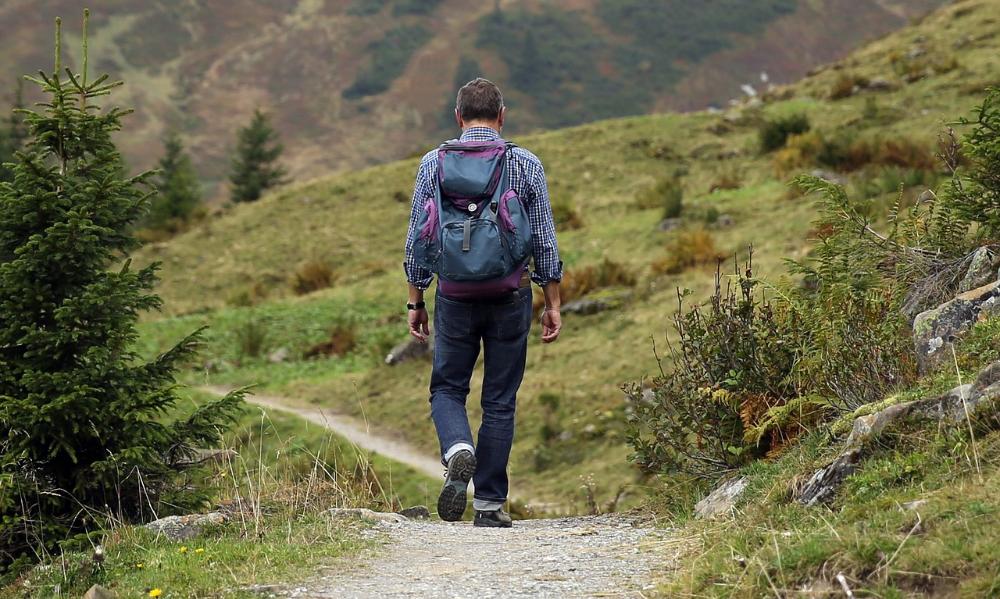
Long-distance walking is not a method of transportation that many travellers consider, perhaps because it is slow, requires a degree of physical stamina and determination, doesn’t allow as many possessions to be carried and doesn’t bring the same instant gratification offered by faster methods.
One major advantage it has however is that it is a completely free way to travel from A to B.
What’s more, we are all bipeds - natural experts at walking. Legs require no skill to use or license to operate. They are incredibly versatile instruments and will carry a traveller through virtually any type of environment, whether natural or man-made.
And if you get fed up or exhausted from walking at any stage, you can easily compliment your journey with other means of transport like buses, trains or hitchhiking.
By walking at a steady pace and avoiding injury or burnout, it is possible to cover vast distances on foot over a longer period of time.
Indeed, people have walked thousands of kilometres and travelled the entire globe using nothing but human leg power.
British adventurer George Meegan and author of “The Longest Walk: An Odyssey of the Human Spirit”, holds the record for the longest unbroken walk.
This man walked 19,019 miles in 2,425 days (almost 7 years) from the southernmost tip of Argentina to the northernmost part of Alaska.
There are several other people that have completed similar walking feats, and some of them are mentioned in this article about 6 travelers who walked around the world.
Long-distance walking is most enjoyable and stimulating when you avoid busy main roads and chaotic urban environments and instead head off into the peaceful backcountry where you can travel through interesting and varied natural landscapes.
This way you will also avoid the temptation to cheat. You won’t have to decline any offers from drivers who offer you lifts with the mistaken assumption that you’re hitchhiking or feel tempted to speed up the journey by taking a bus or train.
There are many possible "themes" for long-distance walking, like following coastlines and rivers or walking along the backbone of mountain ranges.
Other themes might put an emphasis on stopping by sites of historical, cultural or archaeological significance. It really depends on what your interests are.
One popular theme is the long-distance way-marked footpath, such as the pilgrim's Camino de Santiago trail across northern Spain.
There are also many well-established long-distance hiking trails to be found all around the world. Check out this article on7 of the longest hiking trails the world has to offer for some inspiration.
#11 - Travel with a pack animal
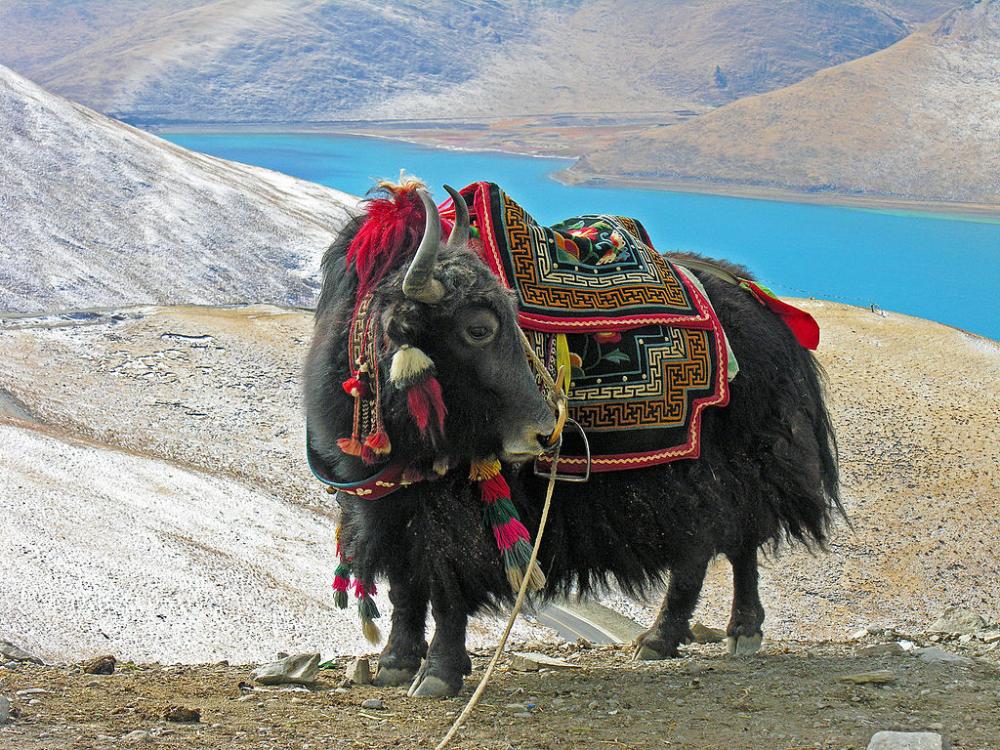
In some parts of the world it’s possible to buy a domesticated pack animal such as a horse, donkey, mule, reindeer, yak, oxen, water buffalo, elephant, camel, llama, alpaca, goat etc. and use it to travel from A to B.
Pack animals or beasts of burden are very popular for travelling across deserts, steppes, grasslands or through remote mountainous regions where there are no roads or alternative means of transport.
They can be very useful assistants on long-distance hiking trails, as the hiker can then be free from the burden of carrying his equipment and supplies. Bigger pack animals can also be rode when the hiker is exhausted or doesn’t want to walk.
Riding pack animals and making them carry your luggage might seem exploitative and indeed it is, but remember that you are also providing a service to the animal by looking after it, protecting it from predators and keeping it well fed, watered and groomed.
When compared to motor vehicles, pack animals can be a very cost-effective means of transport, since they don’t consume any diesel or gasoline, nor do they require oil changes or costly visits to mechanics to get problems fixed.
They do of course require daily sustenance but if you can find plenty of suitable pasture, herbage and water sources en route you shouldn’t have to spend any money buying supplemental food and water supplies to keep the animal going.
There’s also the advantage that you can eat a pack animal if it gives up the ghost during your trip. Surely any kind of meat tastes better than the rubber tyres of a vehicle.
Female pack animals may provide milk and the dried dung of the animals can be used as fuel for cooking in environments where there is a dearth of firewood.
At the end of your trip, you can try selling the animal to a butcher or other interested buyer. If you don't need to recoup the cost, you could donate it to a local family.
As a rule of thumb, most pack animals can carry about 20 – 30% of their body weight. Yaks, camels, oxen, water buffaloes and the larger pack animals will therefore naturally bear larger loads of 100kg or more.
The smallest pack animals such as goats will not normally bear more than 25kg, while a donkey will bear loads of 50kg.
As a general rule, the more you load up the animal, the less distance you’re going to be able to cover each day, so keep the weight down if possible.
Many of the larger pack animals like camels, elephants, horses etc. require a certain amount of knowledge, skill and training to handle and maintain properly.
They tend to be more costly to purchase than the smaller pack animals too. For example, the Maasai tribe in Africa would have to trade 36 goats or sheep in exchange for one camel.
The price for a camel could vary hugely depending on the quality and where you’re buying it, with prices starting around $300 in some parts of the world and rising above $1,000 in others.
Horses however can be very cheap in Mongolia, where some travellers have reported being able to buy one for as little as $100 – 200.
Bigger pack animals are also higher maintenance and will require more food and water each day. A strong kick from these animals can also seriously injure or kill a person.
If you’re a beginner, you should try to learn with one of the smaller and more manageable pack animals like a donkey or goat.
Pack goats are the cheapest pack animal of all to purchase and are relatively hassle-free and low maintenance, although obviously not very well suited to certain environments, such as the desert.
Here’s an interesting article about why pack goats are a great choice for a pack animal.
For more reading on the subject of pack animals, also check out this article on Wikipedia.
Save money when travelling with your own vehicle
In this section of the article we're going to look at a few ways to save money on transportation on the road whenever you're the one behind a wheel.
You might be touring a country on a motorcycle, doing a road trip in a rental vehicle or just riding a vehicle that you hired locally to visit some of the attractions in the vicinity of your hotel.
Whatever the specific situation may be, some of these tips will surely help you to save money when you're travelling with your own vehicle.
#12 - Purchase a vehicle and resell it at the end of your trip
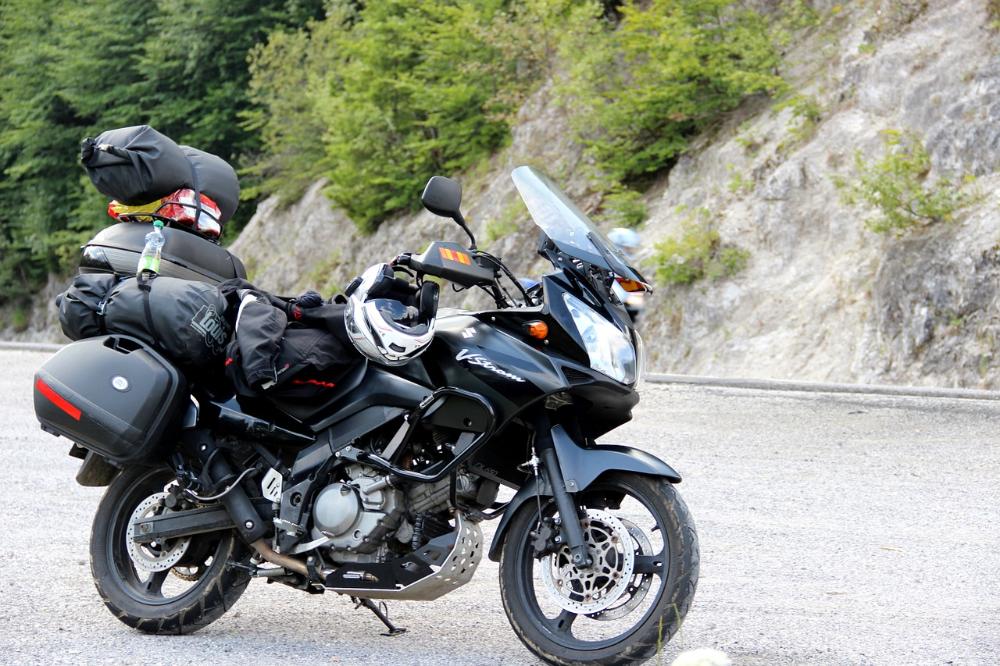
When it comes to touring a country, most travellers depend on the country’s public or private transport services like buses, trains, minivans, taxis and so on.
That’s of course absolutely fine and sometimes it’s the only option that’s available. Other times however, it might be wise to consider touring the country independently with your own vehicle.
If you play your cards right, buying a vehicle and then reselling it at the end of your trip will be a lot cheaper than renting one.
This highly independent approach to travelling works best when you have a plenty of time on your hands before having to leave the country.
That’s because you’ll need time initially to sniff out the right steed, plenty of time to travel across the country and possibly more time still to sell the vehicle for a favourable price before you exit the country.
If time is scarce and you are in a rush to leave the country you may be forced to sell the vehicle for a pittance, thus failing to recoup your initial outlay. Get a longer visa if possible!
Once you own the vehicle, you really have a complete solution for touring the country because you can use it for both long-distance travel between destinations and for getting around locally.
The way that many budget travellers go about it is to first purchase a second-hand vehicle in the arrival city, tour the country with it for a few weeks or months and then resell the vehicle at some point before leaving the country.
Why a second-hand vehicle? Because it requires less initial capital (funds many travellers don’t have) and its value depreciates less than that of a new vehicle, so you can more easily recoup the money you spent when you go to sell it at the end of your trip (or even make a profit).
Which type of vehicle is the most cost-efficient?
The vehicle you decide to purchase might be a bicycle, a motorcycle, a car, a 4 x 4, a jeep, a minivan (also provides free accommodation) a three-wheeler and any number of other possibilities.
A minivan or other small four-wheeled vehicle where you can sleep at night might be a cost-effective choice under certain circumstances.
It could be a good choice if you’re travelling in a group and can split gas costs or if you’re touring a country where accommodation is typically expensive and gas is cheap. Otherwise, it probably won’t be your best option.
A jeep or 4 x 4 would only make sense if you’re going to be driving across the desert or in other difficult off-road conditions, as they aren’t exactly the most fuel-efficient vehicles on the list.
Some travellers have bought tuk-tuks (three-wheelers) in countries like Sri Lanka and have used them to tour the country, but these are not as fuel-efficient as two-wheeled vehicles such as motorcycles.
However, with a tuk-tuk you could potentially recoup fuel costs along the way by charging locals for rides, although if without a working visa, you would want to avoid being seen accepting money by the local police.
In general when you’re trying to really cut costs, the best vehicle to purchase is going to be a bicycle or a motorcycle since they consume less fuel than most other options.
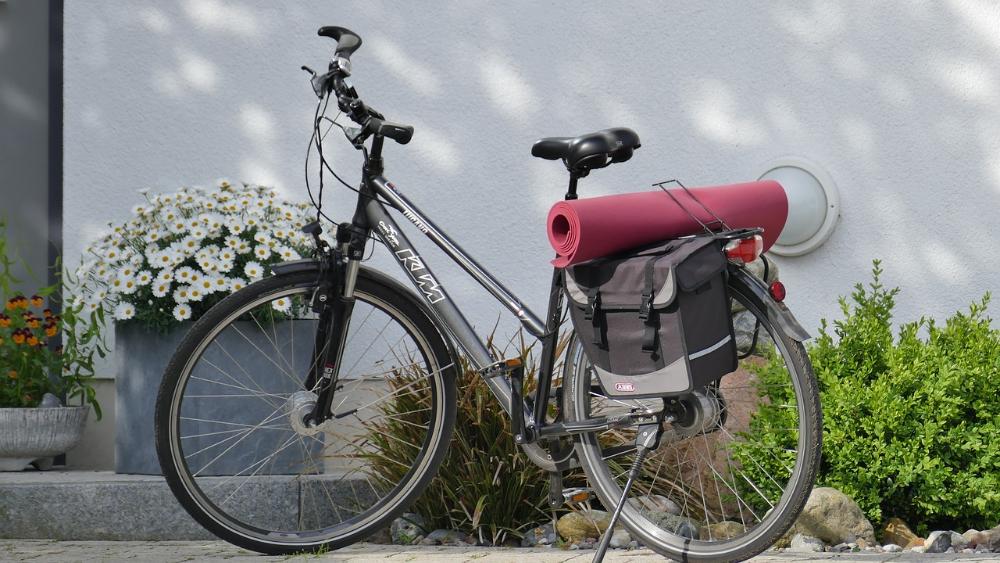
Which of these two vehicles will be more cost-efficient is debatable and will depend on numerous factors, but either vehicle is a good choice if you’re on a budget.
Cycling a bicycle will burn extra calories from all the physical exertion it will demand of you (especially in hilly regions or when battling against strong winds in open areas) and those calories will need to be replaced by buying extra food, which will cost money.
Riding a motorcycle doesn’t come with a high calorie cost but it does require plenty of gasoline, which can vary hugely in price from country to country.
As regards maintenance and repair costs, a motorcycle will normally cost you more than a bicycle, especially if the motorcycle is old or troublesome.
Motorcycle ailments will frequently require the specialized tools, knowledge and skills of a professional mechanic to be resolved. Certain bike components may also need to be replaced occasionally with brand new ones, which can be costly.
Many bicycle problems on the other hand can be fixed without visiting a repair shop, unless of course you’ve seriously abused the bicycle and left it in a sorry state.
All you need to fix most common bicycle ailments is a little know-how and the right tools and spare parts (patch kit, tire levers, multi-tool, bike pump, spare tube, spare nuts and bolts etc.)
Bicycles also don’t require an oil change every 500 km or so, like motorbikes do. Each change of motorcycle oil will cost you a few dollars. Repair and maintenance costs are generally much lower in developing countries though.
A motorcycle will obviously get you from A to B much faster than a bicycle and will be much easier to ride in undulating terrain or when you’re being buffeted by strong winds in open countryside. If you have a lot of ground to cover and your time in the country is limited, it might be your best option.
One country where it’s common for adventurous travellers to buy a cheap second-hand motorcycle, tour the country with it and resell it at the end of their trip is Vietnam. Every year there are hundreds, if not thousands of foreigners that do just this.
In fact, we were one of them when we motorbiked the entire length of Vietnam from Ho Chi Minh (Saigon) in the south to Hanoi in the north over the course of 59 days.
Our fuel costs for the automatic Yamaha Nouvo bike that we bought worked out at just $0.016 (1.6 cents) per kilometer per person. That equates to $1.60 for every 100 km we rode.
In hindsight, we realized we should have bought a semi-automatic bike instead of an automatic one, because our fuel costs then would have been significantly lower (semi-automatic bikes are normally more fuel efficient than automatics).
We managed to sell the bike in Hanoi at the end of our trip for $250 to an eager Russian couple, for a tidy profit of $20 (we bought it for $230).
Unfortunately for us however, the bike was in very poor condition when we bought it. We were lied to by a crook dealer who assured us he had replaced all the old internal components with brand new ones.
As a result of this unscrupulous salesman, we had to spend around $100 on repairs and maintenance over the course of the 2,000+ km trip.
With this being such a long journey, we would have had to spend a reasonable sum of money on repairs and maintenance anyway, but perhaps not quite so much if we had chosen a bike in better condition to begin with.
If you get cursed with a dodgy bike like this, fuel costs may also be higher due to the bike's old, poorly maintained engine guzzling up the fuel greedily and inefficiently.
The lesson learned is that buying a lightweight vehicle and touring the country with it can be a very economical way to travel, as long as you buy from a reputable dealer and don’t get swamped with excessively high repair, fuel and maintenance costs along the way.
#13 - Avoid getting fined or bribed by traffic police
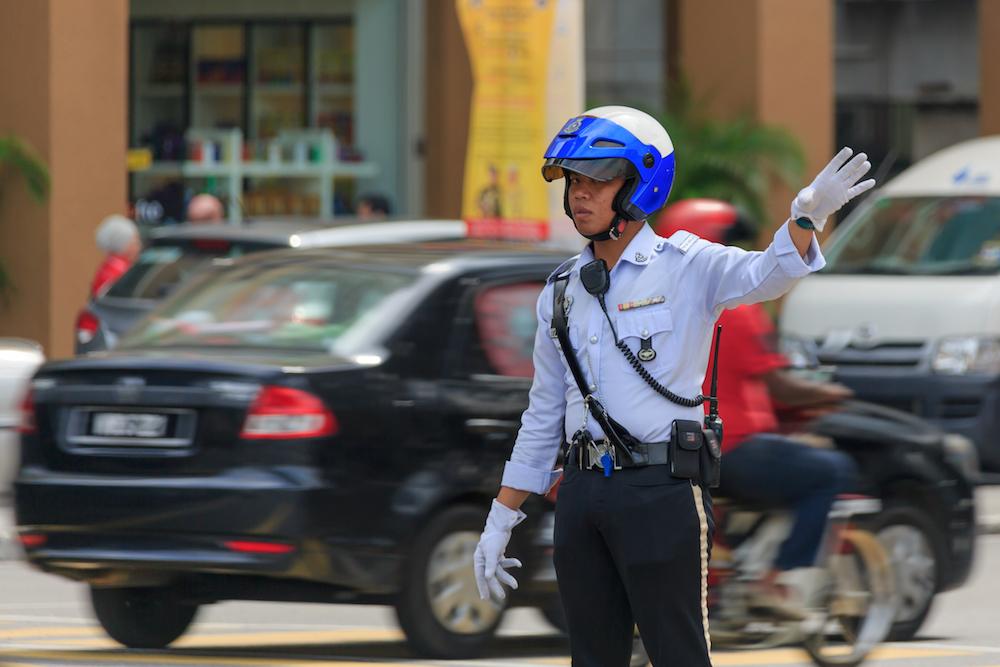
Driving your own vehicle abroad can be very affordable and economical, right up until the point when you unknowingly break the road rules or run into a few corrupt traffic police officials and get fined or asked to pay a bribe to avoid more serious punishment.
That's why a good idea to have an international driving permit (IDP) if you’re planning to drive a motor vehicle abroad at any stage, whether hired or bought.
This permit should help keep you out of trouble in most countries and will help you to evade fines if you have any run-ins with the local traffic police. There are however a few countries that don’t recognize them.
Check outthis page to see for which countries the permit is recommended, required or not required.
In Southeast Asia where we’ve ridden motorcycles in six different countries, we have only once been asked to produce a driving license on one occasion and that was at a scam checkpoint outside Mui Ne fishing village in Vietnam, which was deliberately set up by the local traffic police to extort money from "speeding" tourists.
The police officer asked us to pay a bribe on the basis that we were "speeding" (we weren't) and also because we didn't have any driving license to show him.
After stubbornly refusing to pay him anything for about 10 minutes, the officer had reduced the bribe from an initial asking of about $100 down to just $4. At this stage he was threatening to confiscate the motorcycle if we didn't pay up, so we begrudgingly paid the $4 and continued on our way.
If you don’t want to go to the trouble of getting an international driving permit, you can also get away with an ordinary driving license from your home country in many countries. Sometimes the police don't even know what an international driving permit is.
If you simply don’t have any kind of driving license, it’s possible to get a counterfeit one custom-made for you in some parts of the world.
If you’re travelling to Southeast Asia for example, you can easily get a fake driving license by paying a visit to the notorious Khao San Road in Bangkok, Thailand.
Just walk along the street and look out for the signs advertising a long list of made-to-order cards (student cards, press cards, driving license, degree, diploma, certificate, TEFL, PADI, Lufthansa, Bahn card etc.).
There are around a dozen or so of these stalls spread out along the street. You should be able to get one for 500 baht ($15) or less if you haggle at a few different stalls.
You can also stay out of trouble with the police by respecting the rules of the road. Avoid common mistakes like speeding, overtaking on continuous white lines, driving in the wrong direction on one-way streets, carrying too many passengers and not wearing a helmet while driving a motorcycle.
Blending in with the local traffic will also help keep you out of trouble with the police. Cover-up in conservative countries and wear face masks if the locals are wearing them.
Avoid wearing brightly coloured, flamboyant clothing or driving topless and make sure the vehicle you’ve chosen to drive won’t stand out and draw attention either.
#14 - Minimize fuel wastage
.jpg)
When travelling with your own motor vehicle, you can save additional money by knowing how to minimize fuel wastage.
What you drive, when you drive, where you drive, how you drive, how well you look after your vehicle and a few other factors can all weigh in when you’re trying to conserve fuel and get the best possible mileage.
Here are a few tips that should help you to waste as little gas as possible when touring a country.
Smooth it out
The optimal speed for fuel economy varies from vehicle to vehicle and it’s impossible to give an exact figure.
For motorcycles you typically get the best mileage at speeds in the region of 30-35 mph and for cars many experts recommend a speed of 55-60 mph.
While you should strive to maintain these speeds, in practice it won’t always be possible, due to countless factors like speed limits, slow drivers, bad roads, traffic lights, stop signs, road works, steep hills, sharp bends and so on.
At the very least strive to maintain a steady speed, avoid excessive speeds and avoid unnecessary slowing. If your vehicle is equipped with cruise control, then use it whenever appropriate to maintain a consistent speed.
When you have to accelerate to regain lost speed, a smooth and gentle acceleration is key. Hard acceleration or “jack rabbit starts” are bad for fuel economy.
Plan your route
You should also plan your route carefully so as to be able to spend more time driving on freeways and open roads where you can maintain a more desirable and consistent speed.
Planning will also help you to determine the shortest route, if there’s more than one possibility. Beware though - the shortest route may not always be the most fuel-efficient if it involves the types of roads that you’d generally want to avoid.
The types of roads you generally want to avoid are unsealed, potholed, rough-surfaced, hilly/undulating roads and winding country back roads as much as possible, unless you’re driving for the scenery.
There are however times when driving on these roads will waste less gas than on the good roads, such as when the good roads are plagued with traffic bottlenecks.
Planning will also help you to avoid getting lost, accidentally taking wrong turns, having to backtrack or wasting time looking for parking, which can all be major gas wasters.
Use navigation apps like Google Maps and Waze to help you with planning and determining the shortest and most fuel-efficient route.
Use town bypasses whenever possible so you avoid wasting fuel passing through busy towns, due to traffic congestion, traffic lights, zebra crossings, stop signs and so on.
Road works, rush-hour traffic, accident scenes, presidential convoys and the like can also mess up your fuel economy. We discuss some apps in the next section that can help you avoid some of these gas-hogging scenarios.
Use the gears correctly
Correct use of the gears is also important to minimize gas wastage. High RPMs waste fuel. When accelerating, upshift to a higher gear as soon as possible to avoid over-revving the engine.
Remaining at optimal cruising speeds is also less advantageous if you’re driving in too low a gear and overloading the engine with excessively high RPMs. Make sure also to downshift into in a relatively low gear when climbing steep hills.
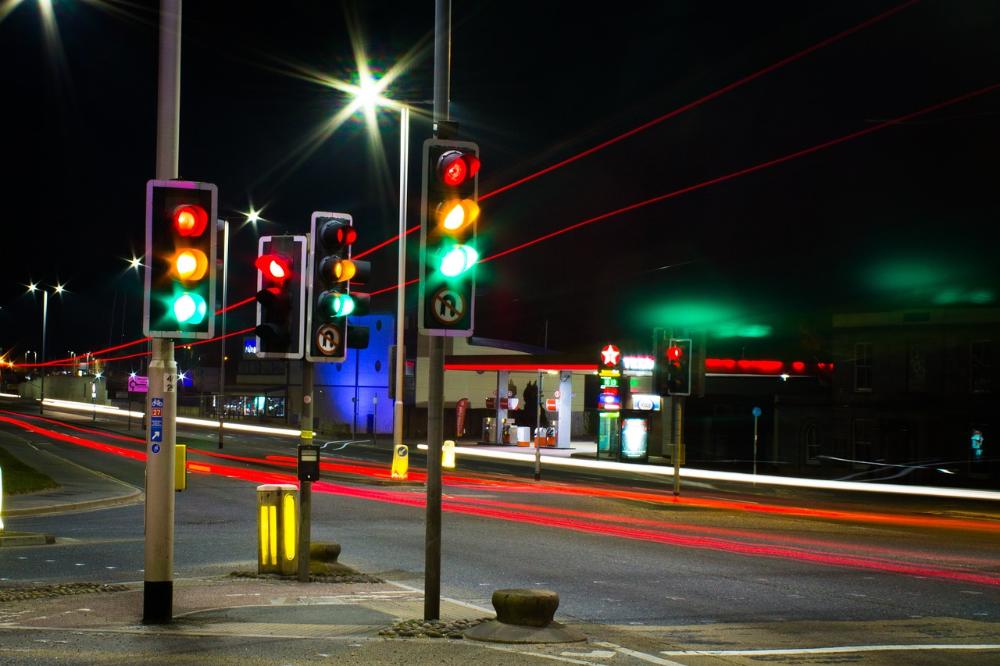
Avoid using the brakes
Braking, if you must do it, should be gentle and gradual. If you find yourself braking hard a lot, you’re probably wasting fuel. This is because you’re likely pressing down on the gas pedal for longer than the person who started braking well in advance of the stopping point.
Another reason is that, if you’re coming up to a red light, there’s a higher chance that it’ll turn green before you come to a full stop if you’re slowing more gradually on the approach. Coming to a full stop wastes a lot of fuel since you have to regain all that lost momentum.
Even better than braking gently, don’t use the brakes at all and slow down only by “coasting” when approaching bends, stop signs, red lights and so on. This will encourage you to let your foot off the gas even earlier and save even more fuel.
When going down hills, you can save fuel by keeping the engine in an appropriately low gear and using “engine braking” to slow the vehicle down.
As long as you keep the engine RPM above the idle threshold, this will waste virtually no fuel whatsoever, because fuel won’t get injected into the engine. Putting the vehicle in neutral gear on the other hand does waste fuel because the engine is idling all the while.
Another option when going down hills is engine-off-coasting, which involves putting the vehicle into neutral gear, turning off the engine completely and using the brakes to keep the vehicle under control. This technique obviously helps to save gas but can be dangerous so make sure you know what you’re doing if you’re going to try it.
Lighten your load
You can also save fuel by travelling as light as possible and shedding any unnecessary weight.
If you’re travelling on a motorcycle, pack light in the first place so your backpack doesn’t add too much extra weight when you strap it to the bike. It’s often best to travel with hand luggage only.
If you’re driving a larger vehicle, remove any external roof racks, top boxes, bicycle carriers and so on unless in use. Remove any unneeded junk from the trunk and check for any heavy items that might be hiding under the seats.
Remember also that less fuel in the tank means less weight. A quarter-tank of gas will give you more MPG than a full tank because it’s not hauling as much extra weight in fuel reserves. Fill up with less, if you dare. Ideally, you would only fill up with as much gas needed to get you to the next gas station or fuel vendor.
Manual vs automatic
Remember also that manual drive vehicles are normally more fuel-efficient than automatic ones, but not always. We usually drive a semi-automatic or manual motorcycle instead of the fully automatic ones.
Reduce aerodynamic drag
If you’re driving a four-wheeled vehicle, driving with the windows up, sunroof closed and the AC turned on will consume significantly less gas than driving with the windows down. Mythbusters did an experiment that demonstrated this and you can watch the videohere.
Even better, if possible, is to turn the AC off altogether. While having AC turned on is not as bad as having the windows down, it can still increase fuel consumption by up to 10%.
Riding in the slipstream of other vehicles should also help to reduce fuel wastage due to wind resistance. The safest vehicles to ride behind are the medium-sized ones like minivans and 4 x 4s where you can still see the road ahead through their front and rear windscreens.
If you’re on a motorcycle you can also lean forwards to make everything more streamlined and minimize wind resistance.
Vehicle upkeep matters
A well-maintained engine will also help to improve fuel economy. Air filters should be kept clean and unclogged to allow the right amount of air to mix with the gasoline. A clean air filter can improve your vehicle’s MPG by up to 10%.
Tyre pressure also matters so check your tyres regularly to ensure they’re not under-inflated. If you can’t find out the recommended PSI for the vehicle, it’s always better to err on the side of too high than too low.
Avoid idling for too long
An idling engine also wastes a surprising amount of fuel. This is the reason putting an engine in neutral and coasting down a hill wastes fuel. The amount of gas consumed depends on many factors but a ballpark figure might be 1-litre or more per hour of idling.
The rule of thumb with idling is that if you’re going to be stationary for more than 10 seconds, you should turn off the engine. When idling for longer than this you consume more fuel than you do by restarting the engine.
Adapt to cold weather
Cold weather can also have a significant impact on your fuel economy, especially if you’re making short trips.
Cold weather causes you to use more gas by reducing tyre pressure, increasing aerodynamic drag (denser air), idling to warm up the engine initially, running the engine at sub-optimal temperatures for more of the time, forcing you to drive at slower speeds (especially in snow, ice etc.), using four wheel drive and so on.
If the weather is cold, try to keep your vehicle indoors so that the engine is not as cold initially when you turn it on. Don’t idle for too long to warm up the engine but rather start driving off gently after about 30 seconds. This will warm up the engine faster than idling. Try to run several errands in one day and make stops brief to avoid letting the engine cool off too much.
At the gas pump
When you’re at the gas pump you should try to avoid spilling gas everywhere and wasting it. Know the capacity of your tank so you don’t accidentally overfill it. Pump attendants may also overfill the tank if you request too much.
Remember too that gas expands in hot weather, so you’ll get slightly more fuel per litre if you fill up during the cooler times of the day, like early in the morning.
Don’t worry about the octane ratings of fuel. Always buy the cheapest possible gas and avoid “premium” fuel. The general consensus is that premium fuel for most vehicles offers absolutely no extra benefit in terms of fuel economy and certainly not enough to justify the extra cost.
If you’re hiring a motorcycle or other motor vehicle just for a single day of sightseeing, you will want to avoid putting an excess amount of fuel in the tank. If you don’t use up all that fuel before returning the bike at the end of the day, it’s wasted money.
You can avoid this common mistake by estimating how much distance you’ll be covering that day and by knowing roughly how many MPGs (miles per gallon) the vehicle will average. Then fill the tank with the exact amount of fuel you think you’ll need or maybe slightly more if you’re worried about fuel availability on your route.
In our experience, a decent semi-automatic motorbike will normally carry the two of us around 50 – 60 km/L on good roads. For a fully automatic bike we’d estimate our fuel consumption at around 35 km/L.
In developing countries, try to avoid purchasing fuel from roadside vendors and shops, unless you’re really in a bind.
For example, in Asian countries, you’ll often see plastic bottles or privately owned gas pumps filled with green or yellow coloured liquid (gasoline) for sale by the roadside. These vendors will normally sell the gas at a higher price so try to get to the nearest gas station instead.
#15 - Download gas saving apps
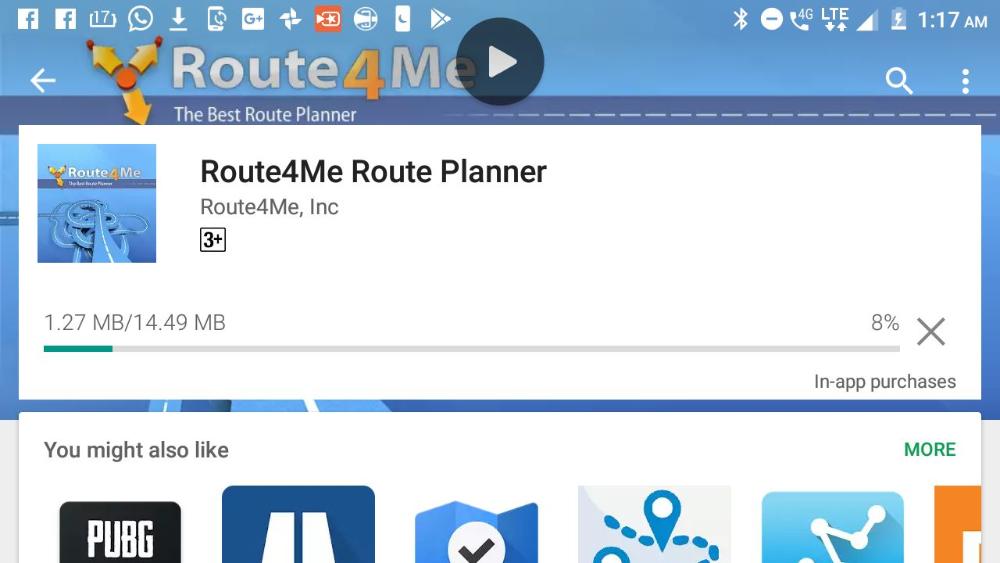
In addition to the general tips given in the previous section, there are many apps that can help you save money on gas.
One of the best known of these is Gas Buddy(US only), which helps you locate gas stations nearby and tells you the price of gas at each so that you know which one is the cheapest.
But if you have to drive further and expend more gas to get to a cheaper gas station, how to know whether it’ll actually be worth making the trip?
That’s where theBankrate web calculator comes in. This app provides a handy calculator where you just have to tell it your car’s gas tank capacity, miles per gallon, the distance to the gas station and the cost of gas at the station and it’ll tell you the net savings you would make.
Other apps like Google Maps Navigation and Waze can identify gas-guzzling traffic jams and offer alternative routes where you can maintain a more steady, fuel-friendly speed.
Route4Me is a great app for optimizing your route when you have to make multiple stops. It could come in very useful for a day of sightseeing. The app claims to be able to reduce the distance travelled by approximately 30%.
Carticipate is an app that allows you to find people to carpool with who are heading the same way as you. It could come in handy if you've acquired a vehicle to tour a country with and want to split the fuel costs with other people.
For more gas saving apps, also check out this great article on 15 Apps That Will Save You Gas Money by Businessinsider.
#16 - Avoid toll roads, toll bridges & ferries
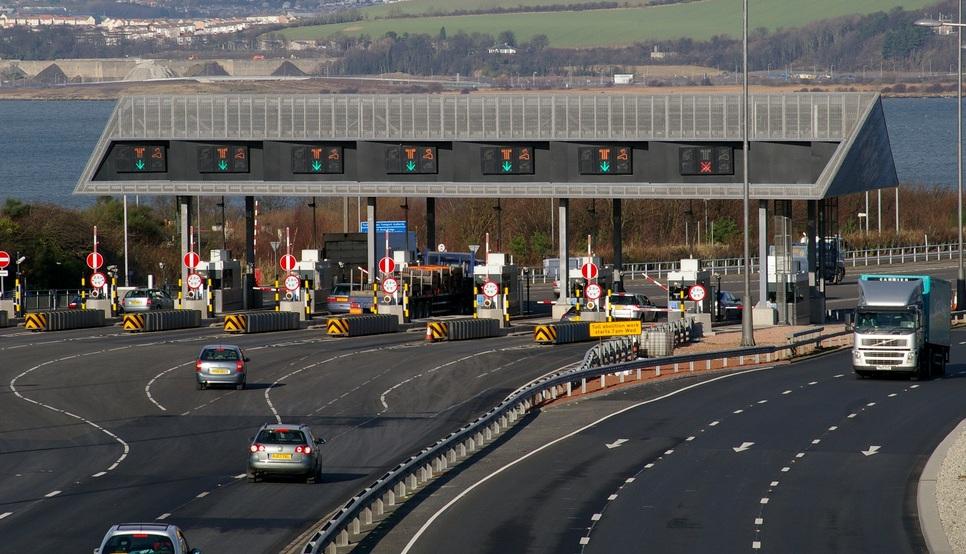
Toll roads and toll bridges can be a major pain in the ass when you’re trying to save money on transportation. Some will even charge you to cross on foot or bicycle.
Luckily, many of these toll roads and bridges are avoidable by taking a detour or by using an alternative road or bridge some distance away that isn’t subject to any tolls.
When you’re touring a country you’ll also sometimes encounter ferry shuttles that allow passengers to traverse rivers, fjords, lakes, lagoons and so on.
Sometimes ferry services like these only exist because they’re convenient, providing a shortcut and helping people to save time. It’s not always the case that there’s no other way to proceed.
Indeed, there will often be an alternative road bridge a few miles away or a route that allows you to circumnavigate the water body, so always check your map.
Normally it’s better to avoid ending up at a toll road, toll bridge or ferry crossing in the first place, if it can be helped. You should plan your route in advance so as to avoid these traps along the way.
In the Google Maps navigation app, you can set filters when getting directions from A to B by tapping the three vertical dots, selecting “route options” and then checking “Avoid tolls” or “Avoid ferries”.
In the popular Waze app you can tap the search icon in the bottom left, then tap the settings icon in the top left and scroll down to navigation. Here you can toggle on/off ferries and tolls.
It’s important to bear in mind that it won’t always be best to avoid tolls, bridges and ferries.
Every individual scenario is unique and you have to weigh up the cost of the toll or ferry against the cost of making the detour (in terms of extra gas consumption, time etc.) and decide whether it’s worth avoiding.
For those tolls that are completely unavoidable, you can at least minimize the cost by driving a smaller vehicle. A bicycle or motorcycle will be your best option if you’re trying to reduce expenses for tolls and ferries.
#17 - Dodge parking fees
Parking fees are often overlooked by travellers as an expense associated with transportation. That’s quite ironic indeed, since parking costs for some trips can outweigh the costs of gas by a healthy margin.
Let’s look at a few ways that you can avoid or reduce your parking fees while travelling.
Avoid big cities
Parking fees can be especially troublesome and difficult to evade in large cities, where finding any kind of parking space (off-street, on-street, underground etc.) can often be difficult, let alone a free one.
To make matters worse, the fees for parking in many cities and urban areas can be exorbitant. Just look at the average hourly or daily parking rates in cities like New York, London and Stockholm.
Parking fees are 16 times higher in London (€8 an hour on average) than in Sofia, Bulgaria (€0.50 an hour on average), according to this article.
If overnighting in a city, in addition to daytime parking expenses, you might also have to find overnight parking for your vehicle if your accommodation doesn’t provide it and if it’s too risky to leave the vehicle out on the street at night.
We had to pay money to leave our motorcycle in an overnight parking facility each night when we were staying in Hanoi, Vietnam due to the high incidence of bike theft in the city.
The first lesson then is to try to avoid spending a lot of time in big, busy cities where space is at a premium, paid parking is costly and free parking is difficult to find.
But if you are forced to spend time in a busy city, how can you increase your chances of being able to locate free or discount parking?
Well you probably can’t beat local knowledge, but there are also several apps that can help.
Apps such as BestParking (North America only), Parkopedia (worldwide), JustPark (mostly UK), ParkMe (worldwide) and Free Parkingcan help you to find cheap or free parking in big cities.
Apps like these allow you to set filters for specific parking rates or free parking to narrow down your search. Some apps also allow you to reserve parking spaces in advance, not only for peace of mind but also because you can sometimes save money by doing so.
For even more parking apps, check out this useful article from Wisebread.
In many cities, there are also off-peak hours when on-street parking is either discounted or completely free. For example, parking might be free from 6 p.m to 9 a.m on weekdays (Mon-Fri) or all day at the weekends (Sat & Sun).
If you can change your schedule to run important errands and do more of your sightseeing during these off-peak times, you could stand to make some savings.
Being quick can also help. Parking spaces are sometimes free for the first 15-30 minutes (sometimes longer), with the fees only kicking in afterwards. If you can get your errands done in a jiffy, you could be back in the vehicle before the time limit for free parking expires.
If you dare, there is also the option of parking illegally or in privately owned car parking spaces of hotels and other businesses that are reserved for staff members, customers, guests and so on. Of course, you risk getting a parking ticket or getting your vehicle clamped if you do this.
Avoid parking fees at attractions
Outside the cities, it’s generally much easier to find a spot where you can park your vehicle for free. This is especially true in developing countries. After all, who is going to stop you from parking down a quiet laneway in the countryside in rural Laos?
However one situation where you might face parking fees as a traveller, even in offbeat areas, is when you visit attractions such as waterfalls, hot springs, temples, archaeological sites, viewpoints and so on, where parking facilities are provided at or near the entrance.
When you first pull into the car park, an attendant may excitedly usher you into a parking space and then approach you to collect the parking fee.
When this happens, all you have to do is jump back into the vehicle and drive away from the provided parking area until you find somewhere else nearby where you can park the vehicle for free.
The parking attendant’s face will probably drop with disappointment, but what can you do?
Once you find a spot to park your vehicle, you shouldn’t normally have to walk too far to get back to the parking area. We’ll often just park the bike at the side of the access road near the entrance.
Perhaps you do sacrifice some security by parking your vehicle outside designated parking areas but vehicles andvaluables still get stolen all the time from “secure” car parks with CCTV and other theft deterrents in place and we have personally never had any issues as a result of this.
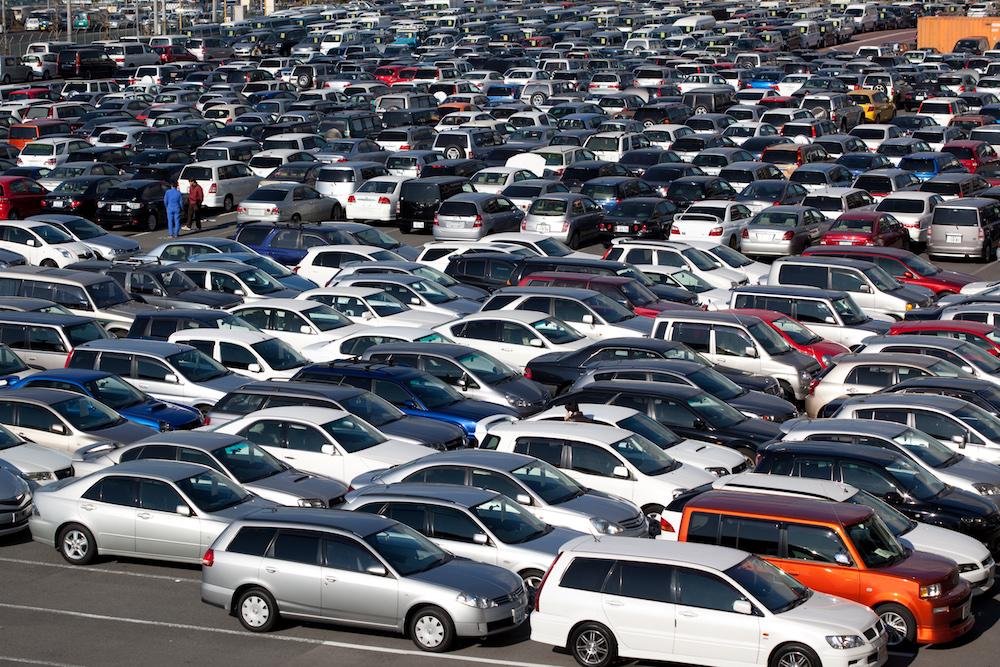
Ride instead of driving
Parking fees are generally much easier to avoid or reduce if you’re driving a smaller vehicle, such as a motorcycle, as opposed to a larger vehicle like a car or minivan.
Motorcycles, being as compact as they are, often don’t require a dedicated parking space and can sometimes just be parked in any random spot you can find, especially if you’re outside the big towns and cities.
Moreover, when a parking fee is unavoidable, it’s often a lot less expensive to park a motorcycle than a bigger vehicle.
An interesting “free parking” hack
If you have no other choice but to use a paid car park, you may still be able to avoid paying the parking fee by employing a special hack.
This hack works in those “pay on exit” car parks, where you take a free ticket from a machine upon entry and then later have to pay in order for the barrier to lift up upon exit.
The method only works in car parks where parking is free for the first 10-15 minutes or so and charged thereafter and involves tricking the ticket machine at the entrance into issuing you with a new ticket when it’s time for you to leave.
Vandogtraveller has an interesting article about this hack.
Avoid parking fees at hotels
Many travellers also get stung with exorbitant parking fees when they stay at a hotel that charges guests extra for parking. Some urban hotels can charge $30 – 40 a night, or even more, for parking.
In fact, in many cities, there simply is no more expensive place to park than hotel parking garages.
What’s even worse is that many hotels don’t disclose the fact that guests will have to pay extra for parking on their websites. OTAs often won’t be able to provide information on parking fees for certain properties either.
If you’re booking a room, always try to confirm that there’ll be free parking for your vehicle at the property before you pull the trigger. If the property doesn’t blatantly advertise “free parking”, be highly suspicious.
You can set filters in most accommodation booking apps and websites so that the search results only turn up properties that provide free parking.
If you can’t find a property that provides free parking then try to find one where there are free or more affordable parking facilities nearby.
Use the sharing economy
Also think about using the sharing economy more often and reaching out to friends and relatives to put you up when you’re going to be visiting their town or city. They might have a free parking space where you can park for free.
Apps likeJustPark (formerly ParkAtMyHouse) can also help you to find privately owned parking spaces (like driveways) that local people are renting out. The company claims that the rates of these parking spaces average 60% less than regular street parking.
Avoid airport parking
When you’re travelling, you should avoid parking your vehicle in airport car parks at all costs, even for short periods of time, as the rates can be extortionate.
Travel with hand luggage only, so you’re not dependent on a car to get to and from the airport and are in a position to take public transport there instead. You might also be able to ask a friend, family member or relative to drop you off.
A taxi might even be a cheaper option for getting to and from the airport than leaving your vehicle parked there – you’ll have to weigh up the costs.
Another option might be to stay at an airport hotel if you’ve an early morning flight and you’re worried about the reliability of public transport during the off-peak hours.
When we have an early morning flight, our preferred strategy is to take public transportation to the airport the evening before and stay overnight in the departure lounge.
If you absolutely must take your car, some airport hotels also offer parking & hotel packages aimed at travellers looking to save money on airport parking. The deals often include a night’s stay at the hotel, parking at the hotel while you’re away and free shuttles to and from the airport. One website where you can find such deals is parksleepfly.com.
You should also see if there are any other off-site parking facilities near the airport where you could potentially save a lot of money, bearing in mind of course the regularity of airport transfers at the time of your flight.
The particular airport you park at matters too. Parking rates can vary significantly from airport to airport.
According to a Which? Car survey, 7 days of business parking at Heathrow Airport could cost you up to £88.70, while at Manchester Airport you would only have to pay £19.84.
Make sure you factor in the additional cost of parking when comparing airfares and consider flying out from different airports where parking is less expensive.
Many airports also have frequent parker programs where you can get discounted parking if you join. These might be worth looking into if you’re parking in the same airport regularly.
Saving money on longer journeys
In this section we’re going to take a look at some ways to save money on those longer journeys you'll often have to make while travelling, when using modes of transportation such as planes, buses, minivans, trains, ferries, shared taxis and so on.
#18 - Plan your route carefully
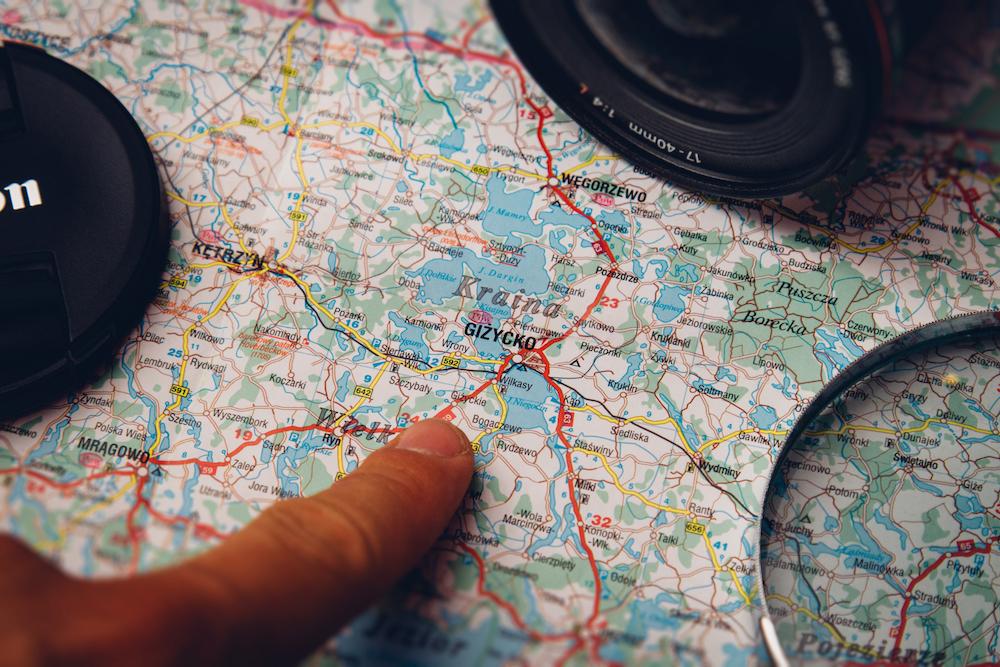
Planning out a sensible route to your destination is vital for saving money when making longer journeys.
The consequences of small planning errors are greatly amplified when it comes to longer journeys, as even one bad decision can potentially add hundreds of extra kilometres to a journey.
Of course, to a certain extent, you don’t always get the final say in what route you take, as you must ultimately yield to the options that are available.
However, it’s still worth outlining an ideal route and then finding out if that route is serviceable.
Take a good look at a small-scale map and try to determine what’s going to be the shortest route to your endpoint that still takes in all the destinations and sights that you want to visit.
It’s also wise to plan your route so as to avoid backtracking.
If in order to exit the country you have to backtrack all the way to your original point of entry at the end of your trip, you potentially double your transport expenses.
You can avoid backtracking by planning to cross overland into a neighbouring country at the end of your trip.
If there are no viable land border crossings (or if the country is an island), you may be able to fly out from a different airport to the one you arrived at. A ferry might be another option for leaving some countries.
Sometimes however, it might be much cheaper or even necessary to exit the country at the original point of embarkation.
When this is the case, you can still avoid backtracking by planning out a route that takes you in a horseshoe or an arc across the country and ultimately brings you back to your starting point. This way there is no extra backtracking journey to be made and paid for at the end of your trip.
#19 - Research options and compare prices

Once you have an idea of the route you want to take, it’s time to start researching your options for travelling it.
We actually prefer to play things by ear here and research each leg of the journey just a day or two before we travel but it’s ultimately down to personal preference.
For any given route you want to travel, there will often be innumerable different modes of transport, operators, companies, schedules, standards and prices to compare.
To further complicate matters, you may have the option of combining two or more different modes of transport together in order to reach your final destination.
With so many different options for getting from A to B, research is obviously going to be the key to figuring out which mode or combination of different modes of transport is going to be the most economical.
Since there are no rules that say that one mode of transport is always cheaper than another (every situation is different), you really need to do your homework here and you will need some resources to help you with that task.
Here are a number of apps and websites that we commonly use to compare different options and figure out which mode of transport or combination of modes is the most economical:
Seat 61 (train travel worldwide)
Rail Europe(train travel in Europe)
Direct ferries (ferry travel worldwide)
Rome2rio(multimodal global transport search engine)
Gopili (multimodal transport search engine for UK & Europe)
GoEuro (multimodal transport search engine for Europe)
Ixigo (multimodal transport search engine for India)
Wanderu(metasearch engine for bus & train travel in Europe & North America)
Wikitravel (global travel guides with transport info)
Travelfish(detailed travel guides for Southeast Asia with transport info)
Don't forget you can also get useful information about transport options in travel guidebooks made by companies like Lonely Planet, Rough Guides, DK and so on, from online guides written by bloggers, by word of mouth from other travellers and by interacting with locals.
For getting information on train fares, the official Government websites can often be very helpful in countries where the railways are state-owned. For train travel in India, there’s IRCTC and for the same in Thailand there’s railway.co.th.
Sometimes there’s nothing that beats paying an in-person visit to the bus or train station if you want the most reliable and up-to-date information on fares and schedules. Information on journey fares can be hard to obtain by other means sometimes, especially in developing countries.
You can sometimes get the information you need upon arrival at a station, if you’ll later be travelling on from that same station.
When calculating the cost of a give mode of transportation, remember to also factor in the shorter local journeys that must be made to travel to and fro between your lodging and the main departure or arrival points.
If any of the bus terminals, train stations, pick-up points, drop-off points etc. are outlying and will prove costly to travel to and from by means of local transportation, you will obviously have to factor in those expenses too.
#20 - Know a few rules of thumb as a fallback

Sometimes you’ll struggle to dig up information on prices for certain routes or certain modes of transport.
It’s then that you will need to fall back on a few rules of thumb, which should help guide you towards choosing the most economical mode(s) of transport in the absence of any hard data.
In general, ground transportation in road vehicles such as buses, trains and minivans or slow ocean voyages by ferry will be cheaper than flying, but slower.
However, the time-saving advantage of flying only becomes truly substantial when you’re travelling serious distances (1,000+ km), so it’s not usually the choice mode of transport for those on a tight budget unless one is making a really big hop.
If you’re reasonably hardy and can endure long overland journeys or ocean voyages, you will have an advantage when it comes to saving money on long-distance travel.
There are of course several different modes of ground transportation that we haven’t compared yet though. Which one is the most economical?
In our experience, the long-distance train is often the cheapest and option of all, in many cases even cheaper than the bus, but there are certain conditions that must usually be met for this to be the case.
Firstly, it will depend on the country, as in some countries trains are never cheaper than buses. But in developing countries where passenger railway transportation is Government subsidized, travelling by train can be incredibly cheap. Countries like India, Sri Lanka and Thailand spring to mind.
The second condition that often must be met for this to be true is that you must normally be willing to opt for a seat in one of the lowest train classes (2nd class, 3rd class, ordinary class etc.). 1st class seats on trains can sometimes be more expensive than flying! Sleeping berths can also be expensive on many trains.
Bear in mind that in the lower classes you may have to rough it and endure hard wooden seats and crowded conditions in some developing countries. Expect open windows instead of AC in the carriages most of the time as well.
When train travelling on the cheap, it’s also important to choose one of the slower trains, ideally the slowest one available. Avoid “Rapid” or “Express” trains and buy a basic ticket for a train that will crawl along at a snail’s pace and stop at most of the stations along the way.
Trains also make a lot of sense for long-distance travel and they make the journey easier to survive. They’re a smoother ride, you can read a book without getting motion sickness, watch the pleasing rural scenery float past, stretch your legs more (usually) and get up and walk around if you’re tired of sitting.
But trains are not to be found in every country unfortunately and their coverage can often be quite limited in the countries where they do exist. They certainly won’t serve every route you might wish to travel.
The question often arises…. Bus or minivan?
Between buses and minivans, minivans are normally a little bit more expensive, though they’re normally a bit faster too, often shaving 20-25% off the journey time.
However they tend to be more cramped and claustrophobic, can be instigators of car-sickness (especially on winding or bumpy roads or if you sit near the back) and if you’re carrying a lot of luggage you may have to pay for two seats instead of one.
Minivans can compensate for the extra cost if they pick you up from your lodging, often saving you a trip to the local bus station, which could cost you if you can’t make it on foot. It’s an important consideration.
In many instances, there isn’t a whole lot between buses and minivans, all things taken into consideration.
Often shared taxis (car, 4 x 4, jeep etc.) are one of the available options for longer journeys (and are sometimes the only option). How economical they are mostly depends on how many people will be squeezed into the vehicle.
In the Indian Himalayas for example, the fares for the shared Sumo jeeps can be somewhat reasonable since they often pack sixteen or more people into the one vehicle.
Nevertheless, these shared taxis are still more costly than the buses and trains of the lowlands. In truth, we would normally choose the bus or train over a shared taxi, if available.
With all this talk about economizing on long-distance transport, we have to also stress that it’s not always wise to choose the absolute cheapest option if it entails making some really unacceptable sacrifice.
The savings may not be worth risking your life due to a reckless bus driver with a death wish, enduring countless hours in uncomfortable, sweltering or cramped conditions, losing a night’s sleep, or severely compromising the security of your valuables.
#21 - Know how to find the best flight deals
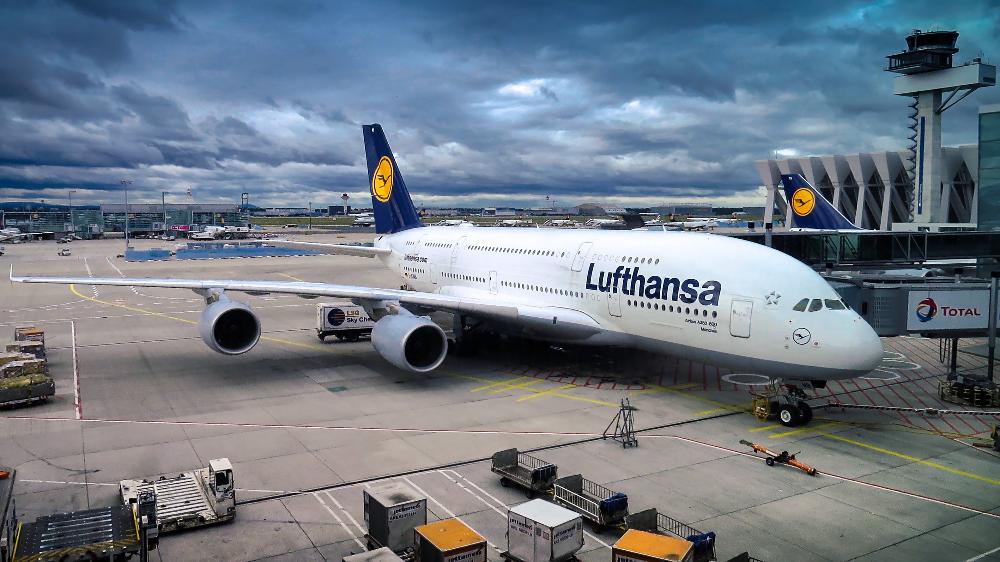
Flying, as we’ve already discussed, is rarely the cheapest means of transportation, but sometimes taking a flight is simply inevitable when you’re travelling.
Islands can often be problematic to reach by means of sea transportation, leaving air travel as the only possibility.
For example, it wasn’t possible for us to travel to Sri Lanka by boat, even though we would have been more than willing to take a ferry from Tamil Nadu in India, had one existed.
The subject of saving money on airfares is huge and requires another lengthy article in itself so we would advise you to check out our article on how to always book the cheapest possible flight to learn about the art of finding cheap airfares.
#22 - Avoid buying tickets through third parties
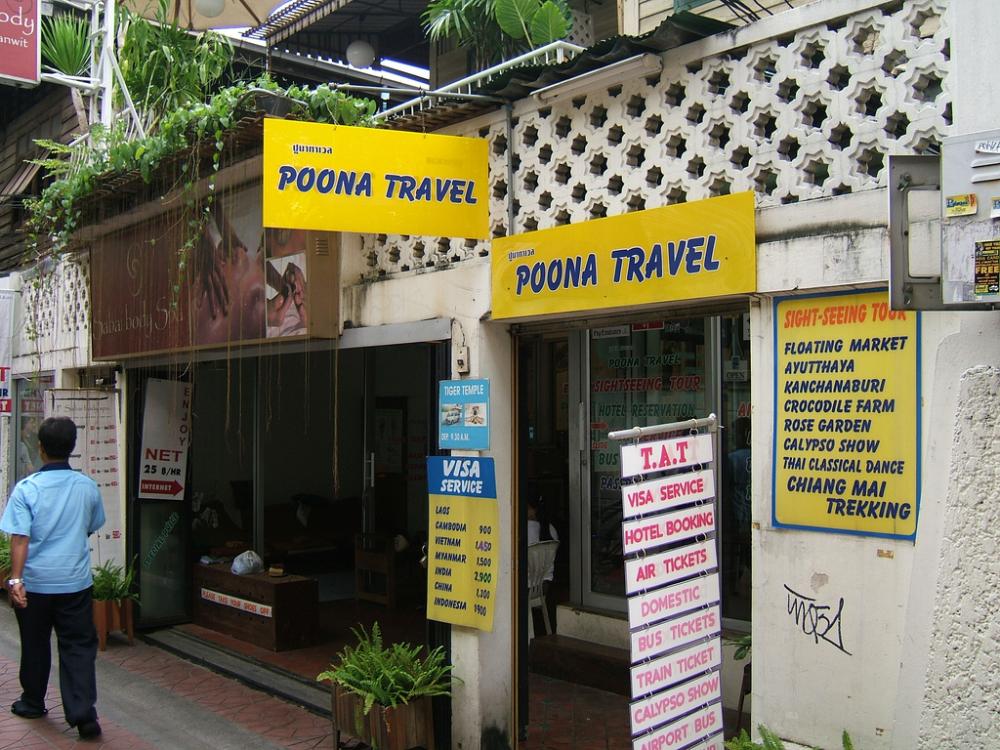
A lot of travellers buy all their tickets through brick-and-mortar travel agents, OTAs (online travel agents), tour companies, tourist information centres, guesthouses and so on. It might be convenient to do this but it’s usually not cheaper.
While buying a ticket in advance or online can often bag you discounts (especially on some train journeys) and may be essential in some instances to secure a seat, buying tickets through third parties is usually something to be avoided if you can help it.
The problem is that the same ticket normally costs more when you buy it through a third party. You’re paying the travel agent’s commission on top of the actual fare for the journey, so the total cost increases.
It’s better instead to try to buy your ticket directly from the company or operator. If you can’t get a contact number or find a website, you can try to find the office of the company. If it’s a train ticket you’re after, head directly to the train station and buy your ticket from the counter.
If it’s a bus ticket you’re trying to buy, many company’s offices can often be found together at large inter-city bus stations.
If not to be found at the bus station, the bus operators will normally have their own individual offices scattered around the town or city where they base themselves. Navigation apps like Maps.me are often good for locating these offices.
For the past three years we have mostly just showed up at inter-city bus stations, train stations and bus company’s offices and have virtually always been able to buy some kind of a ticket on the spot there and then.
We do sometimes buy train tickets online well in advance when travelling long distances in India, because the sleeper berths tend to sell out fast, but in this instance we buy the ticket directly through the Government website (irctc.co.in) as opposed to a third-party OTA like Yatra or Cleartrip.
#23 - Travel at night
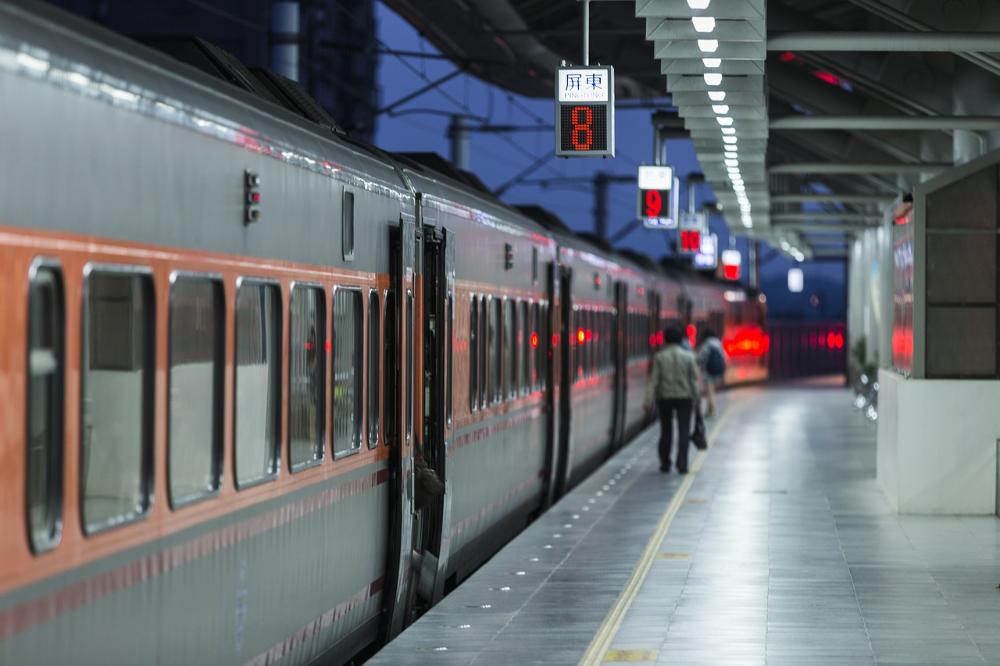
While the mode(s) of transport you choose and where you buy your ticket(s) from are both very important, the time of day that you travel at can also lead to savings.
Namely, travelling overnight on a sleeper bus or train can often be a great way to save money on transport.
The way you can think of an overnight journey is that your fare is paying for a good night’s sleep (which you’d probably be paying for in a hotel that night anyway) and you’re also getting a free ride to your destination as a bonus.
One potential catch is that you may not always get much sleep on these sleeper buses and trains and may have to lose the following day just to recuperate. Still, if you’re drowsy enough, you should catch some shut-eye.
Another potential catch is that you may have to pay more for a bed than for an ordinary seat. This is especially true in trains, where the ticket prices for a sleeper berth can often be way higher than those for a normal seat.
The solution? If you’re hardy enough you can buy an ordinary seat and try to sleep while sitting upright and resting your head against the window.
Or you can try to curl up into a small ball on a two-seater. In the dead of night, when the aisle is relatively free of foot traffic, you can also extend your legs over to the seats on the far side. Or sprawl out across an empty four-seater.
Since overnight buses and trains normally depart some time in the late evening, you can ask your hotel or guesthouse to look after your luggage after checking out in the morning, so that you can still make the most of the day. It’s best to bring any valuables with you though.
#24 - Travel first thing in the morning

If you’re planning to travel during the daylight hours instead of at night, it’s normally best to travel first thing in the morning, unless you’re otherwise certain that there’s a budget-friendly transport option later on in the day.
There are two main reasons we give this advice.
To avoid missing the only direct bus
On some occasions there will only be one bus going all the way to your desired destination each day and frequently that bus will leave in the early hours of the morning, mostly serving locals before any tourists have awoken.
If you miss this elusive once-a-day direct bus and you’re in a hurry to leave on that same day, you might have to hire an expensive taxi or use some other more costly mode of transport to get there directly.
Either that or you’ll have to try to reach your destination by breaking the journey up into separate legs, possibly undergoing multiple changes of buses and other modes of local transport in different transport hubs along the way, until you finally reach your destination. Unless you’re incredibly fortunate, this is going to cost you a lot more than taking the direct bus that goes all the way.
Because early morning travel is sometimes cheaper
Even if there are plenty of buses, minivans etc. serving your destination throughout the day, bear in mind that the fare for the exact same route and mode of transport can sometimes vary according to the time of departure.
The last time we witnessed this phenomenon was in Vang Vieng, Laos, where AC minivans travelling to Vientiane (the capital) in the late afternoon were priced exorbitantly while those leaving early in the morning were priced far more reasonably.
The reasons for this phenomenon of price variability probably have to do with the changing supply of vehicles and changing demand for transport according to the hour of the day.
This would lead us to conclude that if you aren’t able to determine the fares for specific departure times in advance, it’s generally better to try to catch an early morning ride to avoid being stung with an overpriced afternoon one.
The early bird catches the worm.
#25 - Purchase long-distance bus tickets at the last minute

Showing up at the last minute when a long-distance bus or minivan is just about to depart and then haggling for a discounted fare at this very moment will sometimes bag you a great deal.
This technique we’ve found works best when the fare is collected on or at the bus itself, instead of having to be paid in advance at a ticket counter at the bus station.
We once had great success with this technique at the bus terminal in Udon Thani, Thailand, where a night sleeper bus was just on the verge of departing for Chiang Mai.
We were standing there at the station next to the fully loaded bus as the driver was literally about to pull away, but we kept insisting on a hugely discounted bus fare to a man who was communicating with the driver on our behalf.
Eventually the driver acceded to our offer and let us on the bus, knowing that our deeply discounted bus fare was still worth more to the company than two vacant seats.
Is this technique risky if you have a flight to catch or are otherwise in a hurry to get somewhere? Quite possibly, yes.
If the driver is having none of it, you can always just agree to pay the standard fare at the moment when you think that he’s going to close the bus doors and drive off.
There is always however the chance that he will reject your business entirely and not allow you to board the bus after being insulted by your haggling efforts. It’s probably best to play it safe if you have a deadline.
#26 - The direct option is not always cheapest
We mentioned just a little while back that most of the time it will be cheaper to travel direct to your destination by bus, train, minivan or whatever, instead of splitting journeys up into multiple legs.
The reason for this is that the cost per kilometer decreases when you travel more kilometres in one go. Five separate 100 km bus journeys (A to B to C to D to E) will usually cost you more than one 500 km journey (A to E).
However, like most rules, this one was also made to be broken. The exceptions normally occur when journeys are not priced according to distance or fuel costs but rather according to popularity and other complex factors.
These complex pricing systems often result in it being cheaper to split a journey into multiple legs instead of buying one direct ticket that takes you all the way to your final destination.
Splitting journeys is a well-known strategy for saving money on airfares, but it can also be effectively applied to train journeys in countries where the railway system uses a complex pricing algorithm.
To illustrate how split ticketing works, let’s say you were travelling from point A to point D by train. Instead of buying a single ticket from A to D, you might buy a ticket from A->B, another from B->C and yet another from C->D.
If A, B, C and D are all on the same line, you would buy the three tickets in advance and then travel as per usual on the train, remaining in your seat for the entire journey from A to D. You would save money by doing this and it’s a perfectly legal practice too.
Some types of ticket splits might require you to change trains or lines at intermediate stations. In that case you should be able to buy the tickets for each leg of the journey as you go, instead of having to purchase them in advance.
The problem is that figuring out how these journeys could best be split to save money would take an awful lot of time and research that most people wouldn’t be willing to invest.
That’s where websites like splitticketing.com come in. You just search for a train journey from A to B as you would with any search engine and it’ll turn up split ticketing options.
With splitticketing.com they charge a fee equivalent to 10% of the saving they make for you, which seems pretty reasonable considering the amount of time and hassle the service saves you.
#27 - Purchase a long-distance rail pass
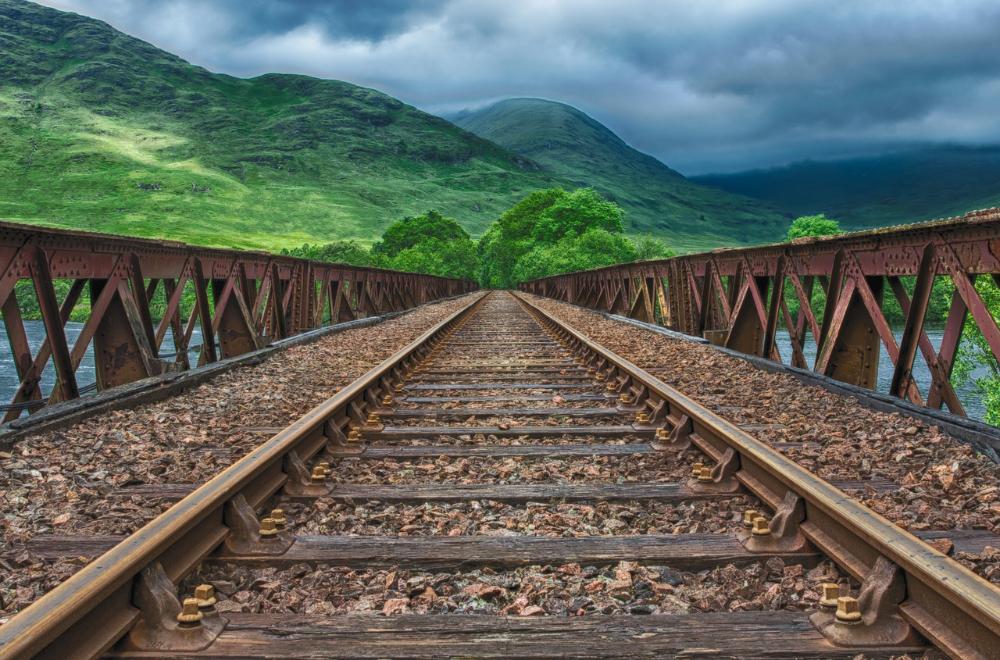
If you’re planning to do a lot of travelling by rail within a country or through several neighbouring countries, buying a rail pass might work out cheaper for you than buying individual tickets along the way.
Rail passes allow you to travel using the national railway networks, traversing continents such as Europe, Australia and the U.S.A and travelling within countries such as Spain, Switzerland, Italy, Japan, Germany and Great Britain.
Some of these passes allow for free or discounted travel not only by rail, but also on partner buses and ferries.
Among the most well known rail passes for travelling by rail in Europe are the Eurail and Interrail passes.
The main difference between these two passes is that the former is only for non-EU citizens while the latter is only for EU citizens or non-EU citizens residing in Europe.
One other important difference is that the Eurail Pass allows you to use the rail networks in 28 European countries, while the Interrail Pass allows you to travel in 30 European countries.
These passes come in a few different types like the one country pass, global pass, select pass, Italy pass and so on.
You can further choose between a 1st or 2nd class pass and there are also various validity options to choose from like 5 days within a month, 15 days within one month, 1-month continuous, 3-month continuous and so on.
The price increases with more travel days per month and the flexible passes are more expensive than the “continuous” ones. If you’re a “youth” (aged 12-27) you get a substantial discount. There may also be a discount for travelling in a group or with a partner.
Note that when reservations have to be made on night trains, high-speed trains or busy trains, the pass won’t cover your costs.
Traveldudes also published an informative article on these two passes if you need further clarification.
A great website to learn more about all the different types of rail passes is acprail.com. You can also buy the passes through this website and have them shipped to you for free if you’re living in the US, Canada or Europe (excluding Italy).
#28 - Hire a motor vehicle for $1 a day or less
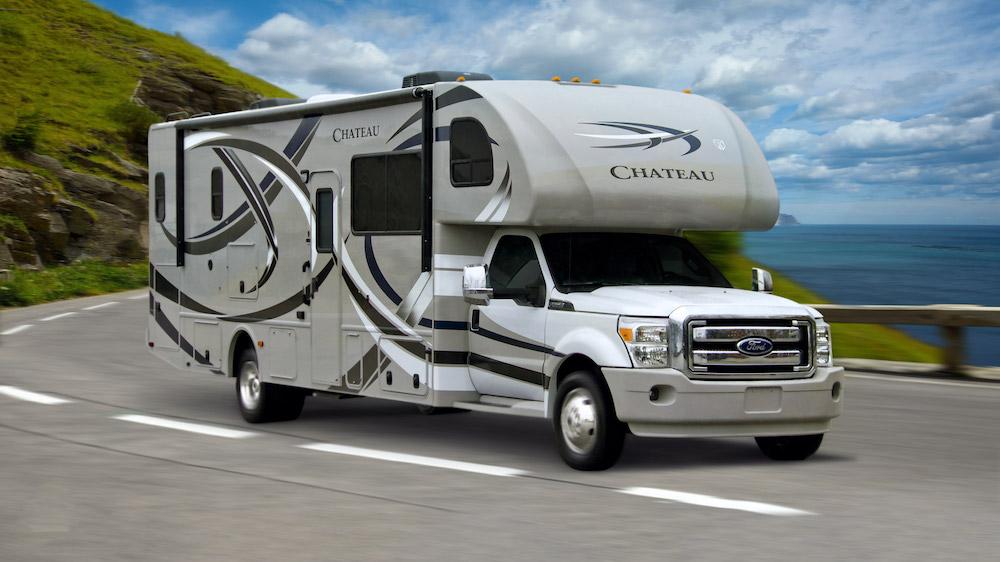
Renting a car or other large motor vehicle is seldom the most cost-effective solution when you’re trying to save money on transportation.
The rental costs alone for the vehicle can be crippling for budget travellers, notwithstanding other costs like fuel, insurance, repairs, maintenance, tolls, parking and so on.
But you might think twice about renting a large vehicle if the rental cost was just $1 a day. We’re not kidding you. It’s possible to rent vehicles such as RVs, campervans, cars, trucks and so on for that absurdly low cost.
They’re called vehicle relocation deals.
These deals spawn from the fact that rental companies often need to relocate one of their vehicles in order to re-supply an understocked rental office elsewhere.
More rarely, a vehicle will need to be moved to its final resting place, where it will be sold along with other used vehicles at the end of the season.
The obvious solution to the problem would be to hire an auto transport trailer or a person to drive the vehicle to its new location (and paying for the person’s flight back). Unfortunately, that would be quite costly for the company.
With necessity being the mother of invention, rental companies have come up with an ingenious solution to the problem; let customers relocate the vehicle for them.
Setting the price at $1 a day ensures that the company will be able to quickly find a driver when a vehicle urgently needs to be relocated. Customers are delighted to pay so little. It’s a win-win situation for everybody.
Some companies will even give you a free fuel tank or a partial fuel reimbursement. They may provide free insurance cover too. Kitchen kits and other perks may also be included.
You generally have 3-10 days to move the vehicle, depending on the distance that needs to be travelled. You’ll need to calculate number of hours you’ll need to be driving each day to determine if you’ll still have sufficient time for sightseeing and enjoying the trip.
While some companies only ask that you return the vehicle before the agreed deadline, others will cap your mileage to that of the exact distance between the start and end points. If you exceed the mileage cap there will be a financial penalty for each extra mile driven.
It’s possible to find vehicle relocation deals in The United States, Australia, New Zealand and more rarely, in Europe and Canada. Most deals in the US are along the west coast.
Most deals usually appear about two or three weeks before the vehicle has to be moved, with additional perks and incentives added as the date draws nearer. The few deals that appear months in advance are usually less attractive, often charging higher prices like $25 per day.
Some of the best search engines for finding these deals areJucy, iMoova and CruiseCanada.
We actually have no first-hand experience with these vehicle relocation deals but Jen and Ted over at thriftynomads.com do.
If you still have unanswered questions about this matter you should check out their in-depth Q & A style article on the topic, which provides a lot of useful additional information.
Saving money on local transportation
In this section of the article we're going to take a look at how to save money when it comes to all those shorter local journeys you'll have to make while travelling.
You might be travelling from the airport or bus terminal to your lodging (and vice versa), making trips to visit local attractions, or running important daily errands like grocery shopping.
#29 - Consider the location of your accommodation
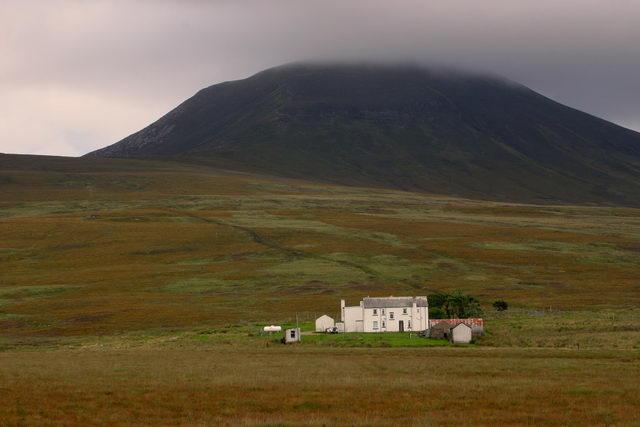
The location of your accommodation is a really important consideration when you’re trying to cut transport costs.
Lodgings in more isolated or outlying areas can be great for unwinding but they’re not always ideal when you’re trying to cut transport costs.
This is because you will often have to make daily trips into the nearest town or village for grocery shopping, ATM withdrawals, eating out, sightseeing and so on and if these amenities are not within walking distance, you’ll be paying extra for local transportation.
Even if a remote hotel tries to provide everything you need, it will often take advantage of its monopoly position and set the prices sky-high for meals and other necessities.
When we choose a property, we always try to ensure that all the amenities that we’re going to require during our stay are within walking distance to avoid getting caught out with extra transportation costs.
#30 - Rent a cheap vehicle locally
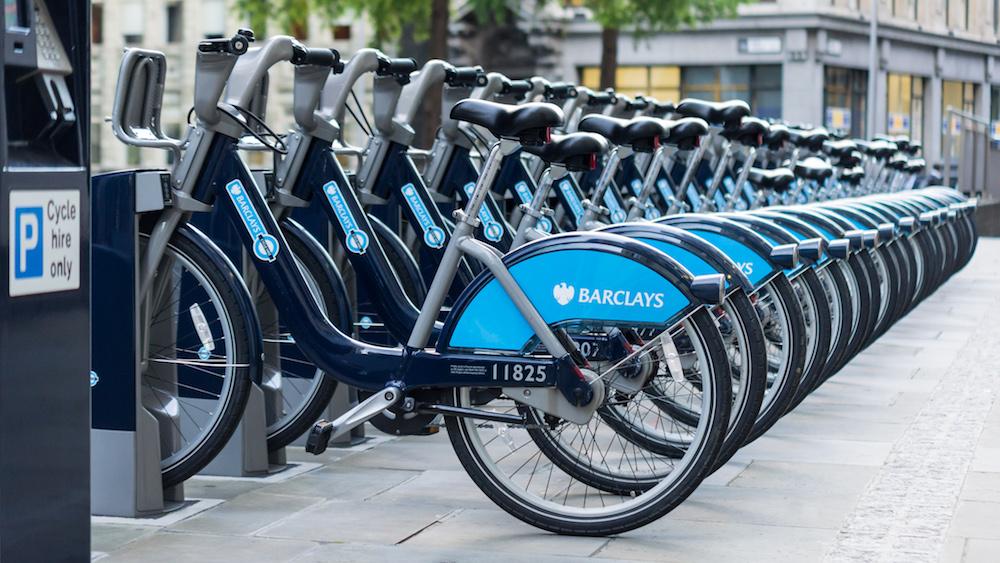
When you have a full day or several full days of sightseeing ahead of you or if you need to run some errands around town, it’ll often be cheaper to rent your own vehicle locally and use it to get around (instead of chartering a taxi or three-wheeler each time).
Of course, the type of vehicle you rent is also an important consideration if this tip is to save you any money.
Renting a bicycle
Bicycles are our preferred option when most of the sights and attractions are concentrated into a relatively small area, but not concentrated enough to be visited by means of a walking tour.
One reason we love travelling in Southeast Asia so much is that you can nearly always rent a roadworthy bicycle from street-side, family-run businesses in popular tourist destinations where there are lots of sights to be explored.
For just $1-2 (24-hour contract) along with a security deposit (passport, cash etc.) you can rent a bike in most countries in this part of the world. You'll virtually always be provided with a lock and maybe a helmet too. Mountain bikes or bikes with gears will usually cost a bit extra, but will still be pretty affordable.
Another option for renting a bicycle in many towns and cities around the world are city bike hire schemes and they can often be a cheaper option than public transportation in some places.
You probably know the ones we mean - the bicycles are parked side-by-side in a neat row at a docking station and you have to pay by debit or credit card at the adjacent kiosk to get a code, which you punch in to release one of the bikes.
Some schemes require you to register an account with a website and many work in conjunction with a smartphone app, which helps you navigate and find a docking station (some cities have hundreds) with a free space near your destination. Apps may also allow you to get bike release codes without having to go up to the kiosk and enter in your card details.
Pricing varies between schemes. Some will charge you a 24-hour access fee and grant you unlimited 30-minute journeys within the period, charging you extra every time you go past the 30-minute mark.
For more information on city bike rental schemes, check outthis article over at bikeradar.com.
Renting a motorcycle
If you’re travelling as a duo or a trio and the sights in town are more widely scattered or if you want to explore the outlying attractions, renting a motorcycle for the day can also be a very practical and cost-effective option.
Southeast Asia is again great for this type of thing. You can rent a motorcycle for just $3 (24-hour contract) from many bike showrooms and large rental businesses in Thailand and usually for no more than $5 from family-run businesses in most other Southeast Asian countries.
As a group of two or three, you can ride the same motorbike together and share the costs for rental, fuel and repairs (if any), which could work out just as cheap as hiring two or three separate pedal bicycles.
Many long-term travellers drive rented motorcycles like this in Southeast Asia without any kind of driving license for years with no repercussions.
Bear in mind also that semi-automatic bikes are usually cheaper to rent than their fully automatic counterparts and sometimes significantly more so, so always try to rent one of those if possible.
To further minimize costs, check that the bike you’re renting is in good condition before signing the rental agreement, as you’ll usually have to cover any costs for repairs or punctures that crop up during the day.
#31 - Borrow your host's vehicle for getting around
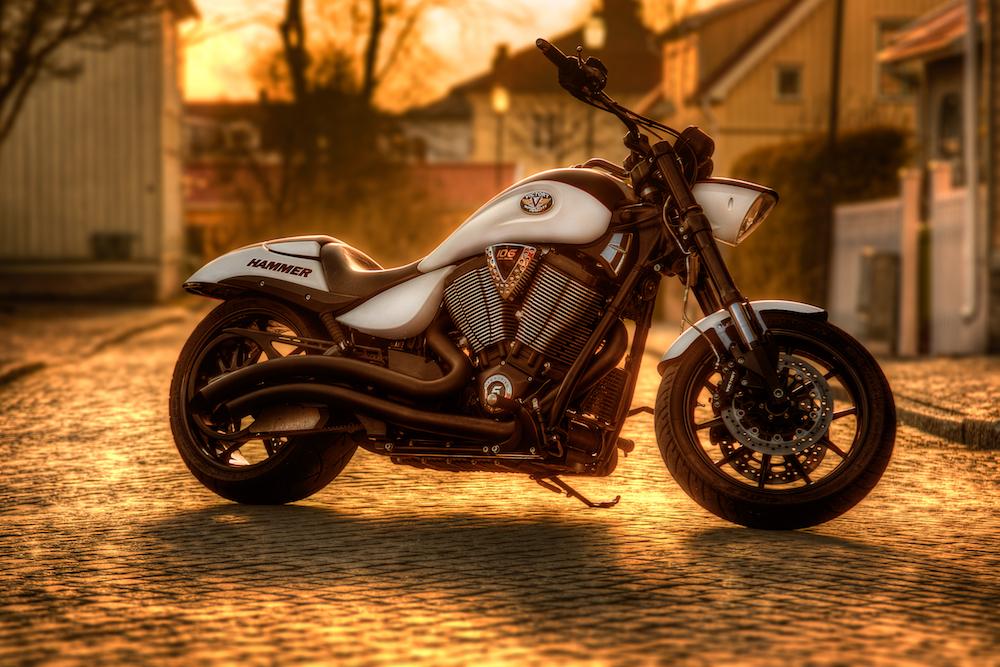
If you’re staying with a friend, relative, family member, partner, Couchsurfing host etc. that owns a spare vehicle, your host might be willing to freely lend it to you for the course of your stay so that you can easily get around to all the local sights and amenities.
Even a bicycle is better than nothing; it doesn’t necessarily have to be a motorized vehicle if your host is a bit iffy about that idea. It's always worth asking.
#32 - Do local short hops on foot
.jpg)
Sometimes it can be really tempting to hail a taxi (car, three-wheeler, motorcycle taxi etc.) for all the local short hops that you need to make when you’re travelling.
But if you can resist the impulse to hail a driver and motivate yourself to walk instead, you’ll be able to significantly cut your monthly transport costs.
For instance, when you want to visit a few of the local sights and there’s no way to hire your own bicycle or motorcycle (our preferred method of getting around), consider walking to them from your guesthouse instead of taking the lazy option.
Self-guided walking tours can be especially practical in more compact cities, since most of the sights and attractions will be concentrated into a smaller area.
In some European cities you can also avail of free, guided walking tours of the city. These are easy to locate and join if you stay in hostels, which often advertise them.
You will usually be encouraged to tip, since the guides work on a voluntary basis, but there’s no obligation to do so if you don’t wish to.
For more information on European walking tours, check out this great post on 6 of the best free walking tours in Europe.
If the sights are more widely dispersed and you have a lot to visit, then walking will be less practical, but if you just want to visit one or two, you may still be able to walk to them on foot, depending on the distance.
Our rule of thumb here is that we’ll walk to a sight if it’s less than 2 km away from the property we’re staying at, although we have in the past walked much greater distances than this to avoid getting charged exorbitantly for short hops.
If the weather is hot, go as early as possible in the morning to avoid walking in the midday heat. Setting out late in the afternoon will also allow you to escape the heat but beware of opening hours!
As an extra benefit, these times of the day also provide better soft, diffused light for photography (less harsh shadows) and fewer selfie-snapping tourists to spoil your shots.
Another occasion where you might be very tempted to hail a taxi is when you land at an airport, railway station or bus stand somewhere in the town outskirts and you need to reach the centre to find accommodation (or vice versa).
The temptation here arises from the fact that you’re going to be carrying your entire luggage and the idea of walking with such a burdensome load will be anything but appealing.
That’s one reason you should pack as light as possible when travelling, ideally equipping yourself with nothing more a carry-on daypack.
Doing so will mean that you are no longer so wholly at the mercy of the touts and local taxi drivers for onward transport when you disembark at your destination and on many occasions you may be able to walk all the way from your point of arrival to your guesthouse.
#33 - Use the public transportation system
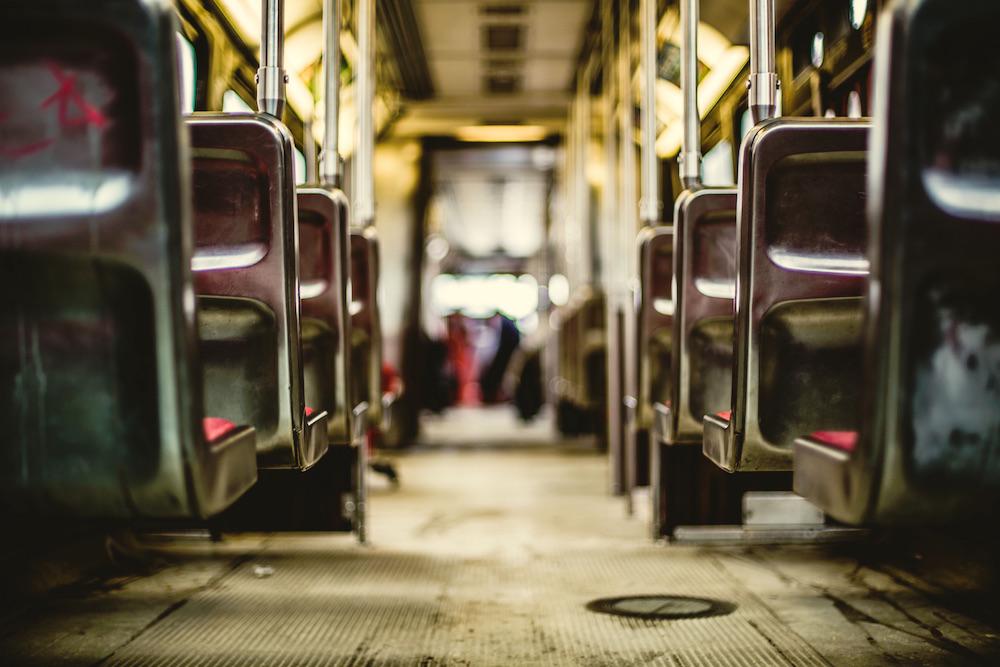
The public transportation system is often one of the best ways to get around a town or city cheaply.
You usually don’t have as much freedom to go just about anywhere as you do when you rent your own vehicle, but sometimes renting is just not an option and this is the next best alternative.
A lot of travellers shy away from using public transport systems like local buses, trains (commuter, subway, metro, monorail etc.), trams, minivans, canal boats, river ferries, river-crossing shuttles etc in many towns and cities. This is somewhat understandable.
After all, there’s usually a steep learning curve involved.
To take Bangkok as an example, the public bus system is dirt-cheap but can be very confusing and intimidating for newcomers with so many different bus routes, bus numbers, bus schedules, bus stops and bus types (AC, non-AC etc.) that need to be learned before you can use the system competently.
Moreover, the approaching buses will sometimes only pull over if you make a concerted effort to wave your hands like a maniac and flag them down.
Another reason that travellers avoid public transport is that it can often be overcrowded, cramped and uncomfortable. In Indonesia for example, locals will routinely blow smoke in foreigner’s faces on the local buses, though perhaps not deliberately.
As a result of all these deterrents, a lot of travellers instead pay a premium to travel around in taxis, three-wheelers, horse-drawn carts and other more expensive modes of transport that involve chartering a private vehicle.
But if you instead go to the trouble of researching the public bus, tram and train routes, schedules, numbers, stops and so on, you will be rewarded with a lot of extra cash in your pocket for more amazing travel experiences.
Simply using the public transport system blindly of course does not guarantee that you will always be taking the most economical mode of transport possible.
For example, the BTS skytrain in Bangkok might be considered a form of “public transit”, but it’s not as cheap as taking one of the dirt-cheap local buses in the city.
If you’re unsure whether you’ve chosen the cheapest possible mode of local transportation, just take a glance at the other passengers around you. Are they well-heeled?
If your fellow passengers are predominantly poor, working-class folk from the lowest social strata of society, you’ll know you’re on the right track to saving money on transportation.
You can be positively sure that the poorest members of society will naturally gravitate towards the cheapest possible means of getting around; they simply don’t have any other option.
#34 - Buy incorrect tickets
A less extreme and not completely free method of fare dodging is to buy incorrect tickets when not appropriate, such as discounted tickets for children, youths, senior citizens, students, disabled citizens and the like.
Having an incorrect ticket has an advantage over having none at all, in that you’re at least guaranteed to get through the ticket barrier at your departure station (although you may still face difficulties at your arrival station if there are ticket barriers there too).
At some bus and train stations these special discounted tickets can be purchased from the ticket vending machines without having to provide any verification. Otherwise, you may be able to procure them by providing a fake I.D to a person behind the counter.
While you could still get in trouble with a ticket inspector for having a discounted ticket with no ID to verify that you are entitled to it, it’s a more forgivable offence than having no ticket at all and you may be pardoned on the basis of ignorance.
In fact, people buy incorrect tickets accidentally all the time, with no underlying intention of taking advantage of the system. You can just claim to have made a mistake, like all those other people.
Another type of incorrect ticket that can save you money on trains
is a ticket that’s only valid for the first stop or two.
The ticket will get you past the ticket barriers initially and you can then try travelling multiple stops on that incorrect ticket. If you see ticket inspectors jumping onto the train after you've exceeded the ticket's validity, you should obviously jump off.
Once you arrive at your destination, you might be prevented from exiting through the ticket barriers, as the machines will usually detect that the ticket is not valid and the gates won’t open.
If a station attendant lets you through the barriers manually, he may ask to see your ticket, which would reveal that you didn’t buy the correct ticket. You will then likely be asked to pay the difference at the ticket counter. You won't be able to lie about what station you came from it will be printed on your ticket.
It’s very important therefore to do a lot of research if you’re planning to use this technique to save money on transportation.
You should know which train stations have and don't have ticket barriers and for the ones that do, find out if there are any alternative ways to exit the train station without passing through the barriers.
Another idea is to buy off-peak train tickets during peak operating hours. These types of tickets can be purchased in the British railway system. Many passengers do this as a mistake anyway, out of sheer misunderstanding, so you should be able to blend in with those if the ticket inspector catches you.
#35 - Carry plenty of small change for local rides
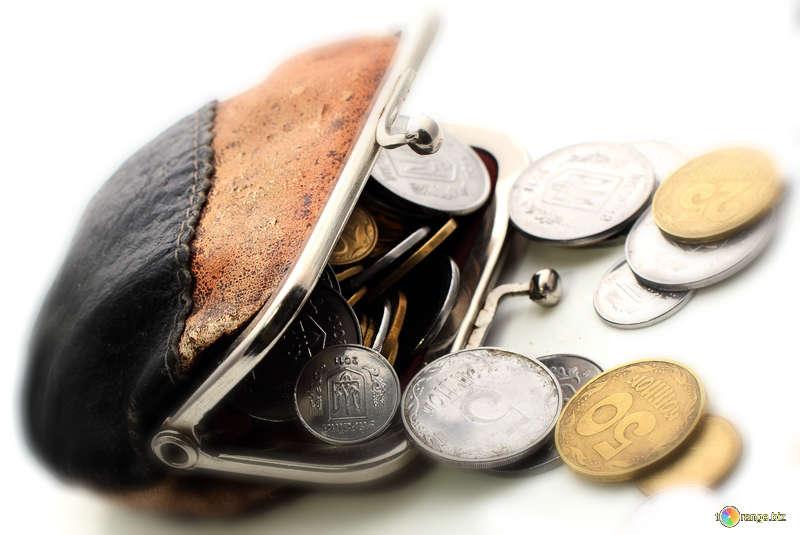
Let's start by discussing the importance of carrying small change when riding local buses.
While small change is not essential to carry on every local bus, (especially when fares are collected manually) there are some local bus services around the world that aren’t able to give you back any change whatsoever, even if you tender a note or coin of very low value.
In Ireland for example, once you step on the bus you are required to drop the fare, consisting of a few coins, into the farebox next to the driver’s cabin.
If you can’t provide the exact fare, instead of physical change, you get issued a paper receipt entitling you to a cash refund that you can redeem whenever you like. Once you’ve accrued a few receipts you would then pay a visit to the Dublin bus head office and trade in the receipts for a cash refund.
However this system is very inconvenient for many travellers and may even require an extra trip in itself. It's better to just carry plenty of small change in the first place.
In Malaysia there’s also a farebox next to the driver on the local buses, but you’re out of luck if you have a bigger note, as no change will be given. You don’t get issued a refundable receipt either.
You can of course try sourcing small change from a fellow passenger but what if the person can’t assist or what if you’re the only person boarding the bus?
Your only option in that scenario is to overpay for the bus ride or alight from the bus and frantically try to find a shop nearby that can give you small change before the driver loses his patience waiting for you.
Always have plenty of smaller coins and notes in your pocket if you’re travelling on buses that don’t give change or that might struggle to break a larger note.
It's also essential to carry small change when riding local taxis, three-wheelers, rickshaws and the like.
This will prevent any "misunderstandings", when the driver doesn't return your change on the basis that he understood the agreed fare to be higher than what you understood it to be. It will also mean that drivers can't play the "I have no change" card, thus pressuring you to leave them a generous tip.
#36 - Consider buying an all-inclusive city pass
.jpg)
In many European cities such as Paris, London, Rome, Vienna, Prague, Berlin, Barcelona, Marseille and so on, it’s possible to purchase an all-inclusive city pass, which will allow you free entry to numerous sights, attractions, monuments and museums, as well as free use of the public transportation system.
Some city passes include additional benefits like a free hop-on hop-off bus tour of the city, a free riverboat cruise, discounts on selected shops, tours and restaurants…. and so on.
These passes make the most financial sense in cities that aren’t very compact or friendly to pedestrians and cyclists, where you’d otherwise be spending a lot of money on public transportation each day to get around.
The other criterion for these passes to make sense financially is if you had already planned on doing a lot of intensive sightseeing or “cramming” within a short period of time. Some passes only work out cheaper if you visit more than four different sights each day.
If you had originally planned on taking things more slowly and then decide to buy a pass, you will feel compelled to rush around sightseeing at an unnatural pace to get your money’s worth from the pass.
One of the less obvious benefits of these passes is their ability to save you precious time and improve your productivity, by allowing you to bypass long queues at ticket counters.
Passes can usually be purchased at airports, online at their official websites or at other locations around the city.
There are often a few different pass duration options, like 2-day, 3-day, 5-day passes. The passes will expire and become useless after the last day, which piles on the pressure to cram as much as possible. Discounted passes may also be available for teens and children.
Be mindful that some passes have a “purse value” or a cap on the total value of attractions you can visit with the pass.
For example the 6-day Paris Pass allows you to enter attractions with a total value not exceeding €350. In this case, the pass itself costs just €239 so it’s good value for money if you’re going to be very active during those 6 days.
#37 - Sometimes it's cheaper to book a tour than doing everything by yourself
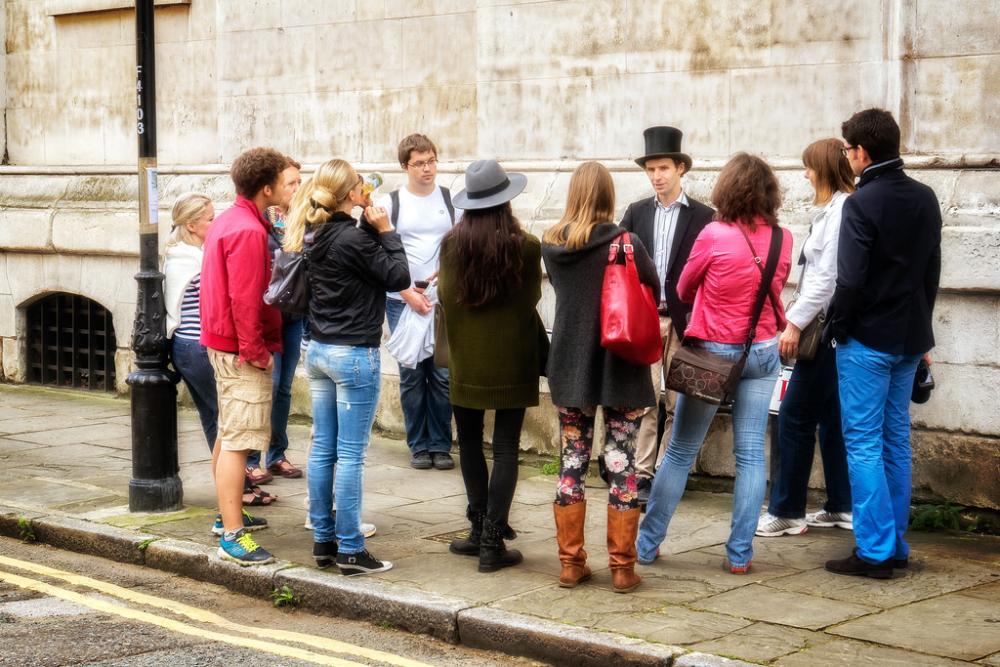
You might assume that independent sightseeing is always going to cheaper than booking an organized tour. Well, you’d normally be right.
Tours are usually quite pricey and it is usually cheaper to rent a vehicle or use public transportation to visit all the local sights and attractions independently.
However, there are certain circumstances where booking a tour will actually be more economical.
One instance where it might be cheaper to book a tour is when the tour itself is impossibly cheap. When we visited Saigon, Vietnam, we noticed that some of the full-day tours to the Mekong Delta were going for around $4 per person.
Our Mekong Delta tour departing from Saigon involved a long round-trip journey by bus, visits to various temples and cottage industries, various demonstrations and explanations from our guide, four boat rides, a ride in a horse-drawn cart, and included free bottles of water, a free lunch and free samplings of various fruits, sweets and teas.
There was no way on Earth we could have done all that for less than $4 by doing it ourselves.
Another time that booking a tour might be cheaper is if the attractions are quite far away and can’t be reached by public transportation or by renting a cheap vehicle such as a motorcycle.
If your only option for independent sightseeing is to hire an expensive car or charter a taxi/three-wheeler for the day, it might be worth comparing with the cost of an all-inclusive tour.
Of course, there are still many reasons why you might not opt for a tour, even if it does work out cheaper.
Many travellers dislike the fact that on a tour you must acquiesce to the tour company’s schedule and agenda, which may not always suit you.
Tours can be very rushed and intensive, often cramming dozens of sights and activities into a single day. There is rarely any possibility to explore the sidetracks or to linger on a little longer in a place that you really like. Sometimes you barely have enough time to even stop for a photograph.
Conclusion
We've covered a lot of information in this article. Although it might seem like there's a lot to remember when it comes to saving money on transportation while travelling, the good news is that making the right decisions becomes second nature after a while.
Remember also that this article has been a very general discussion of how to save money on transportation. There are so many different systems of transport all around the world, all with their own little quirks and loopholes, so we certainly haven't covered every possible trick in the book here.
Therefore, use these tips as a foundation, but always remain open to learning something new, always be innovating and always be looking out for the loopholes in each new transportation system that you encounter throughout your travels.
Additional resources
Although this is probably the most exhaustive guide on this topic out there, it's always helpful to see things from other traveller's perspectives too. We would also like to acknowledge the work of other bloggers, whose innovative ideas helped us to write this article.
The following is a list of other useful resources from around the web on the subject of saving money on transportation while travelling.
How to Save Money on Transport While Traveling by Mapping Megan
How to Save Money on Transportation Costs While Traveling by Christy Woodrow
21 Ways to Save Money on Transportation by Charlene Oldham
How to Save on Overland Transportation While Travelling by Rodrigo from Outofyourcomfortzone
If you enjoyed this article or found it useful, please share it with other travellers. What was your favourite money-saving tip from the article? Do you have any tips of your own that you'd like to share with us? We'd love to get your feedback in the comment box below!
Pin this article!
JOIN OUR LIST
SUPPORT US
FOLLOW US
ABOUT US
Our names are Eoghan and Jili and we hail from Ireland and India respectively.
We are two ardent shoestring budget adventure travellers and have been travelling throughout Asia continuously for the past few years.
Having accrued such a wealth of stories and knowledge from our extraordinary and transformative journey, our mission is now to share everything we've experienced and all of the lessons we've learned with our readers.
Do make sure to subscribe above in order to receive our free e-mail updates and exclusive travel tips & hints. If you would like to learn more about our story, philosophy and mission, please visit our about page.
Never stop travelling!
FOLLOW US ON FACEBOOK
FOLLOW US ON PINTEREST
-lw-scaled.png.png)

